OLLIO in Sweden: Experimental abstraction since more than 20 years
Beginnings with style writing
Jonathan Josefsson aka OLLIO was born in 1978 in Gothenburg, Sweden. When he was 12 years old, he started listening to hard rock, death metal and punk, playing bass and guitar in a band. Later he was skateboarding and DJing techno and drum & bass. In 1995, he remembers that many boys he knew were already tagging and showing Graffiti magazines around. OLLIO started to sketch letters at home and sprayed his first piece in 1996 with a friend. His first name was ZAIR, later MOUSE. The outskirts of Gothenburg in the mid 90s had many abandoned places to paint, and he started being more and more active and finally founded a crew with his writer friend SOUL named EMS (Eat my short). In five years other members joined, later he was part of the crew BTL (Breaking the law). Until 1998, he used the name MOUSE for circa 100 pieces, pushing the wild style until he was bored with it. He discovered works by VINO from Spain and original pieces by some train writers in Stockholm like by RILO, UNIK, APE and the Fame crew, who did develop new styles at that time. In 1999, Jonathan changed his writer’s name into OGSÅ / OXÅ and experimented his first abstraction on big walls with a friend, mainly using rollers and paint. But at the same time, he was also into characters, comic and illustration and painted and still paints figurative pieces sometimes, not wanting to limit himself in painting only one style.




During the turn of the millennium: Other inspirations and becoming OLLIO
From 1999 to 2001, he attended a fine art school in Gothenburg for two years, where he learned classical drawing and painting and discovered new techniques, new possibilities. This really opened up his mind for the arts, according to the artist. He learned about modern and contemporary art and appreciated the work by Picasso, Keith Haring and Basquiat the most. A visit to a big show of the Danish artist Per Kirkeby with colourful large format paintings made a lasting impression on him as well during those student years. In 2000, Jonathan finally changed his name into OLLIO and joined the LUPS crew (love unlimited productions).
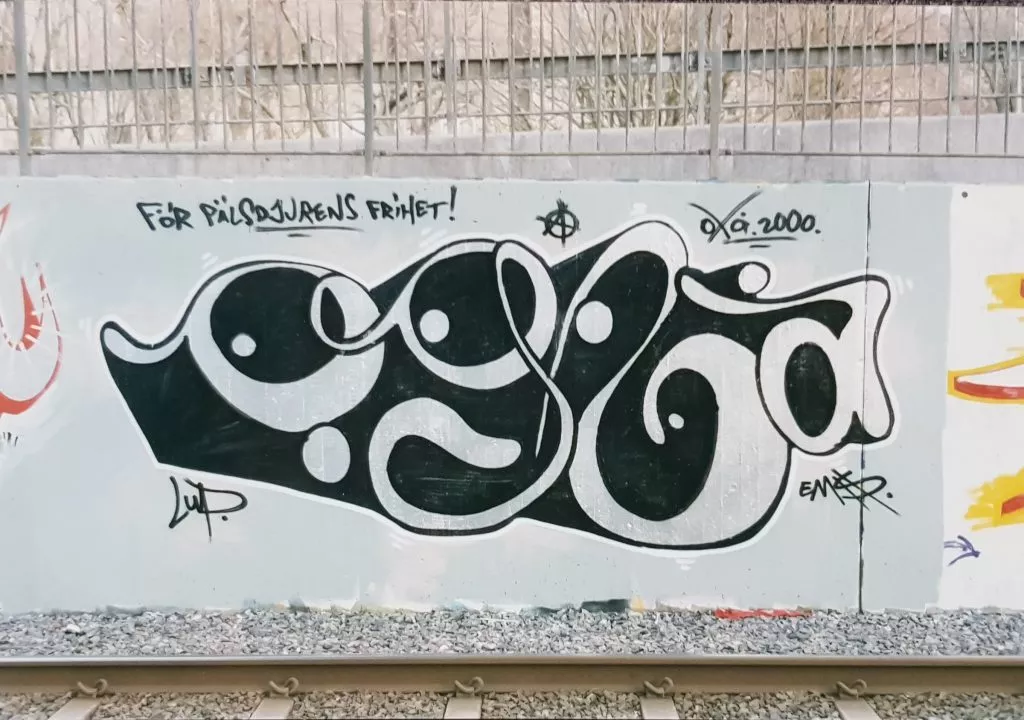

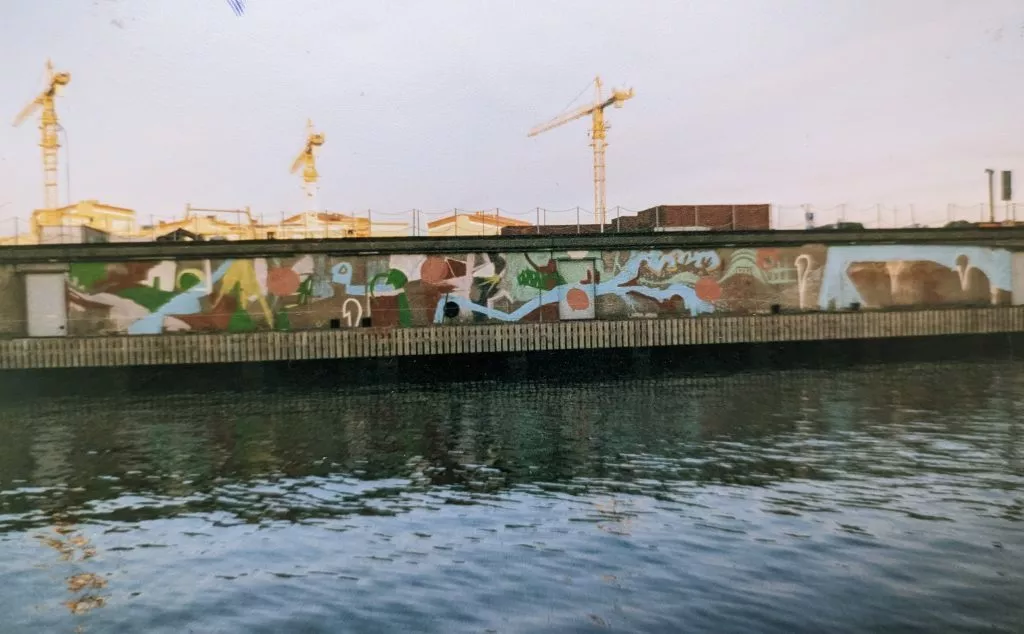

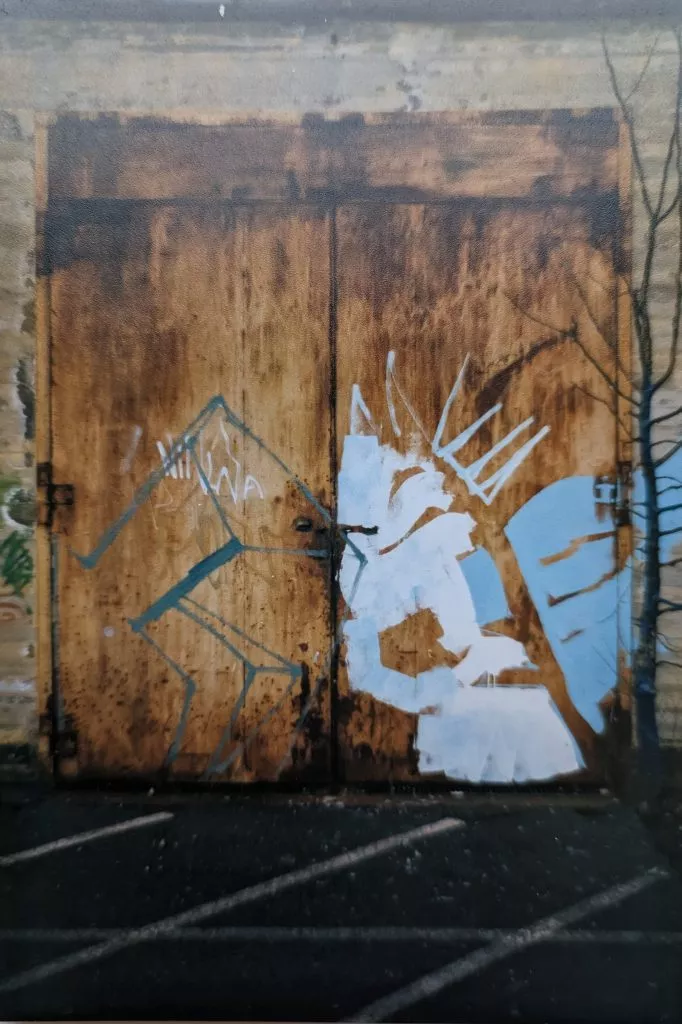
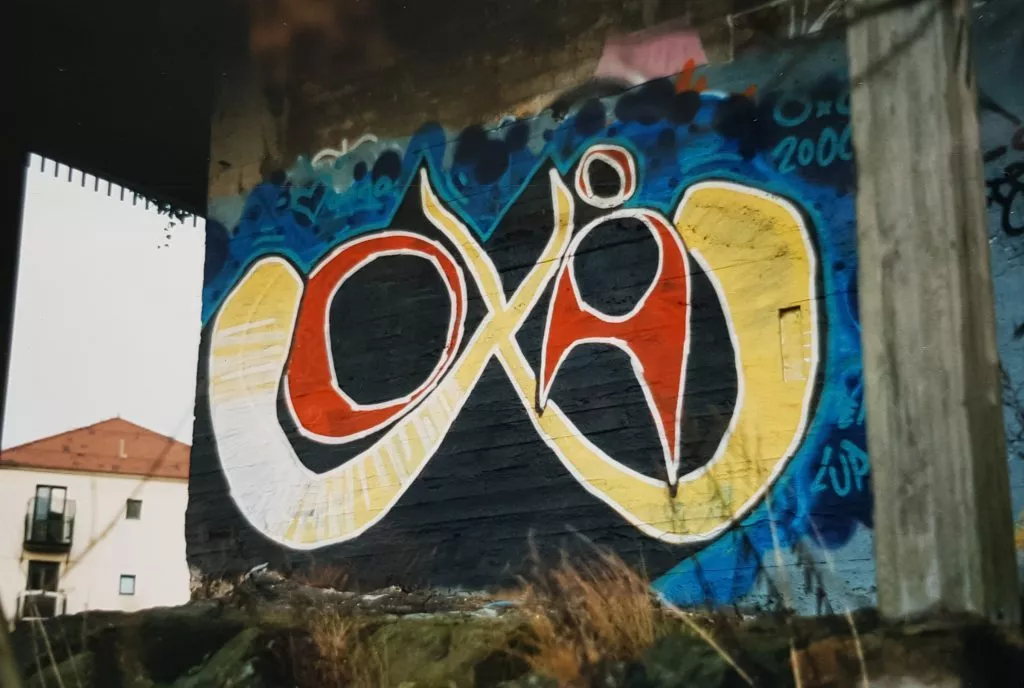
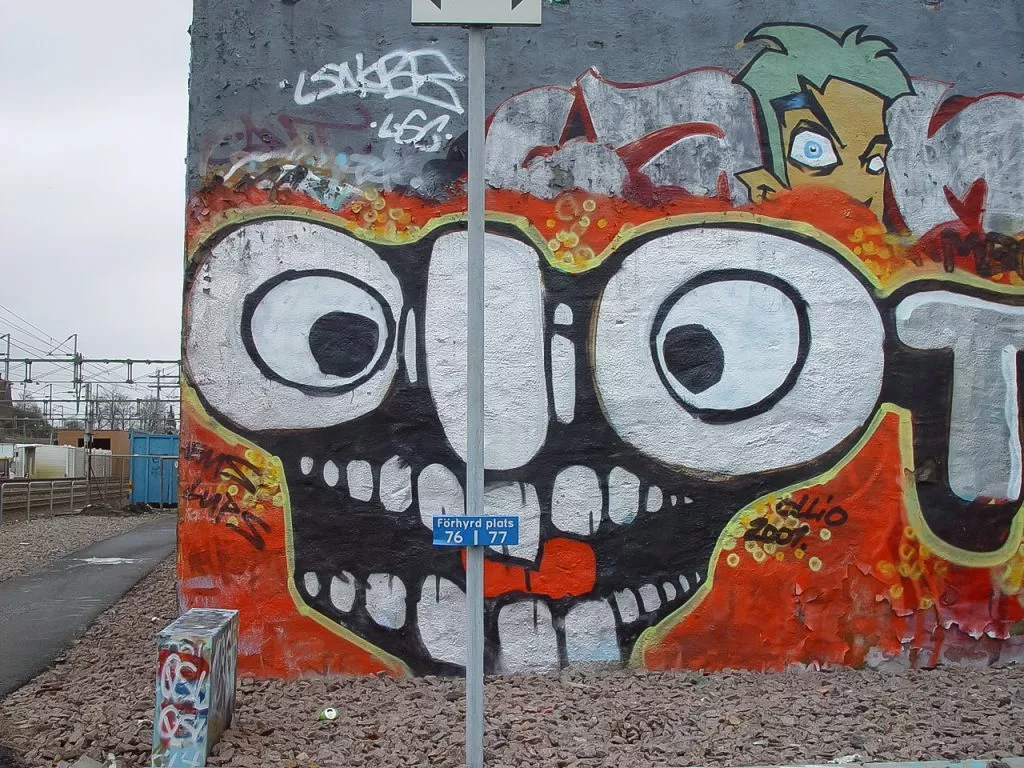
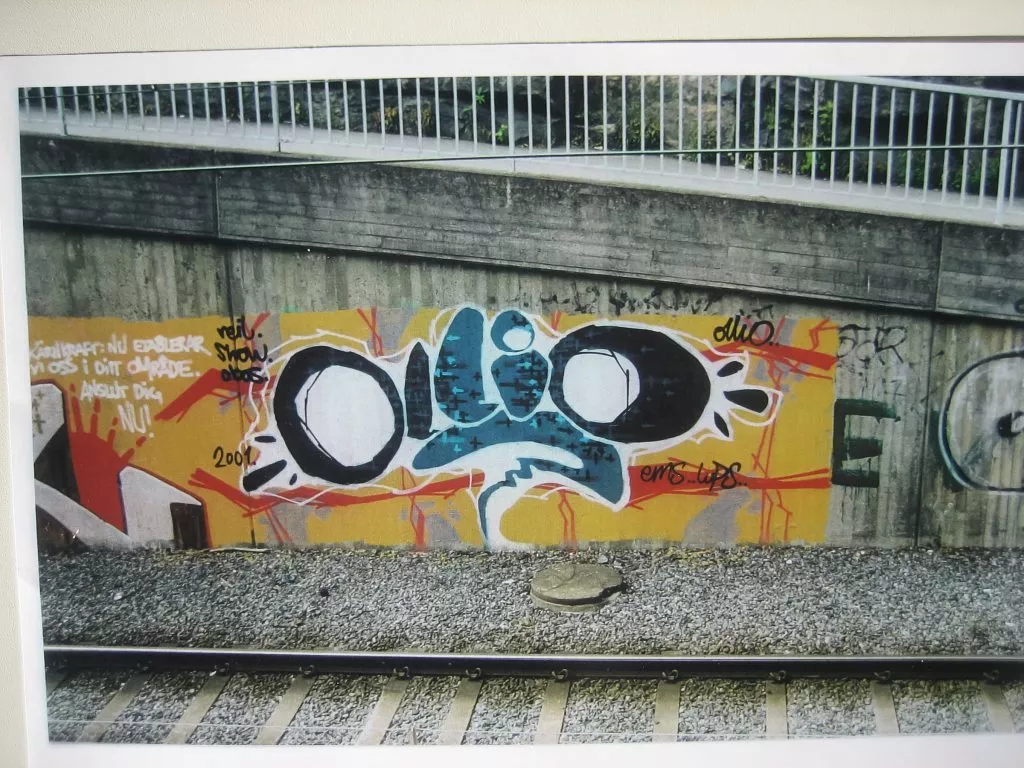
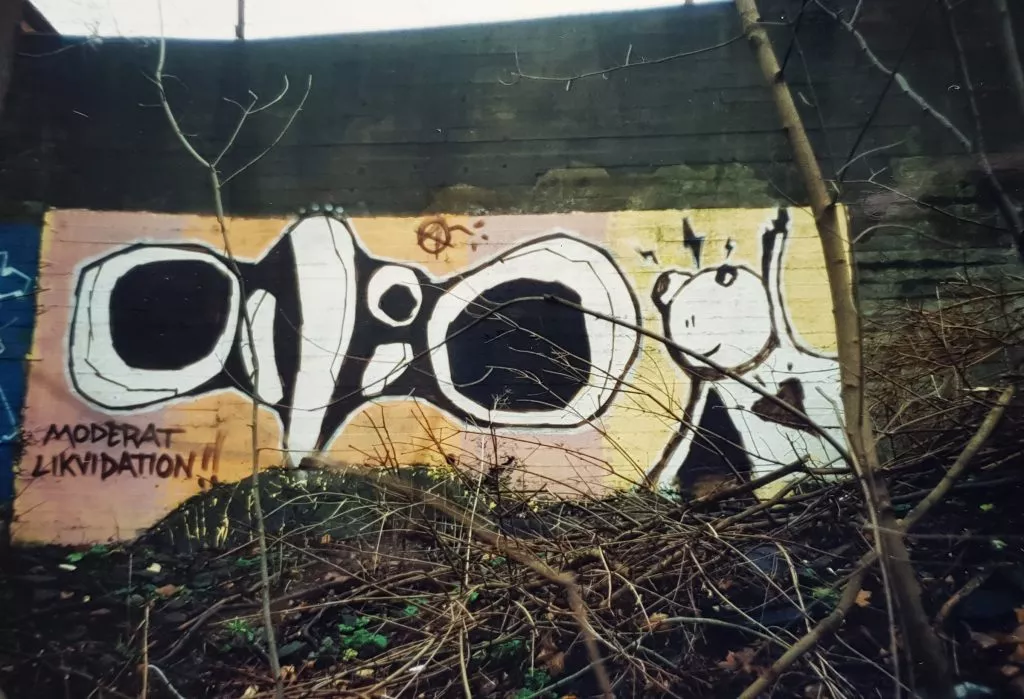
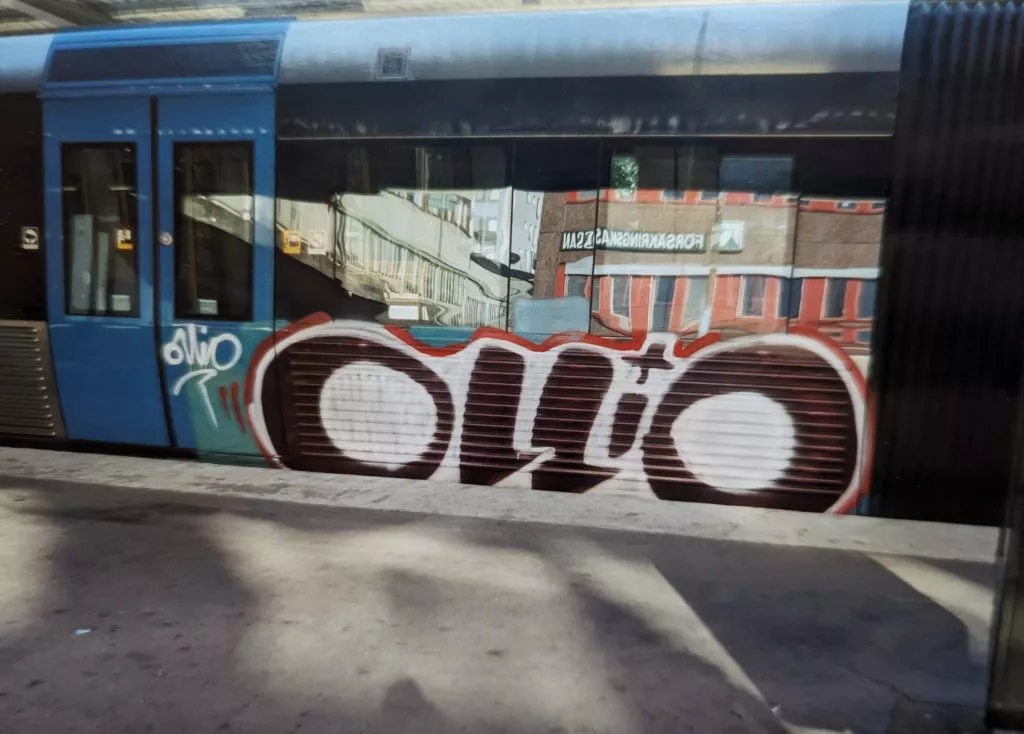

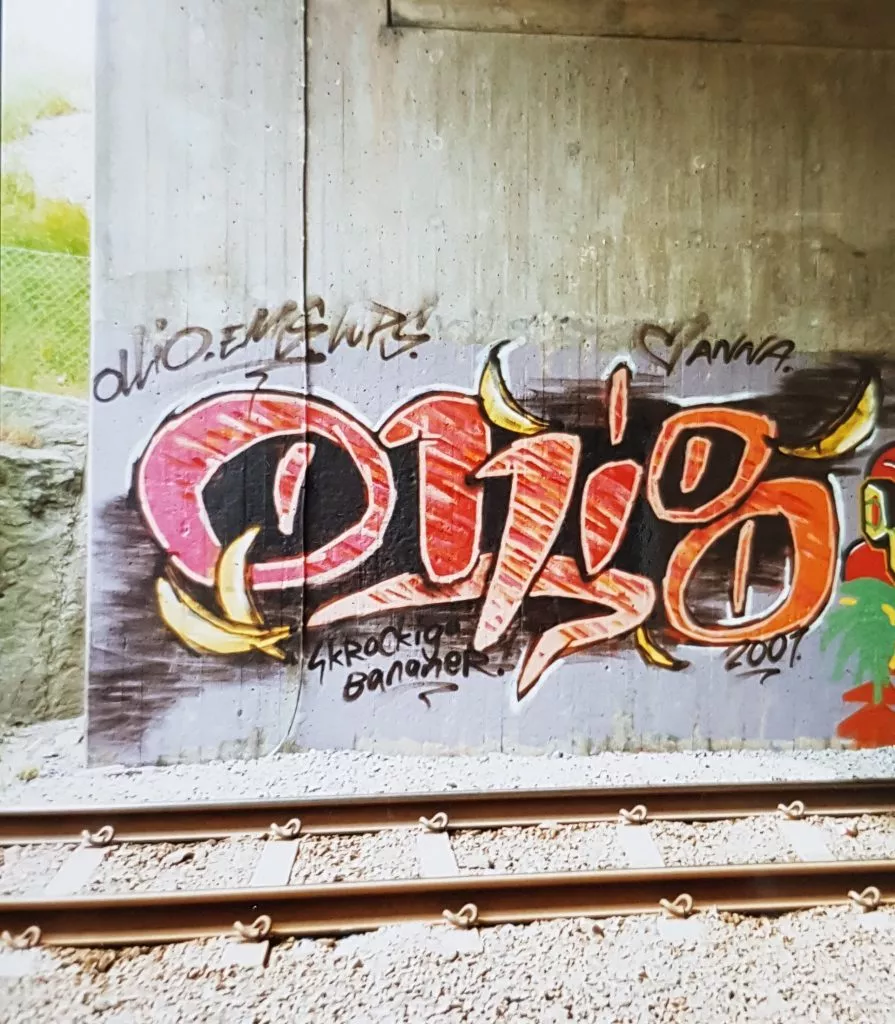
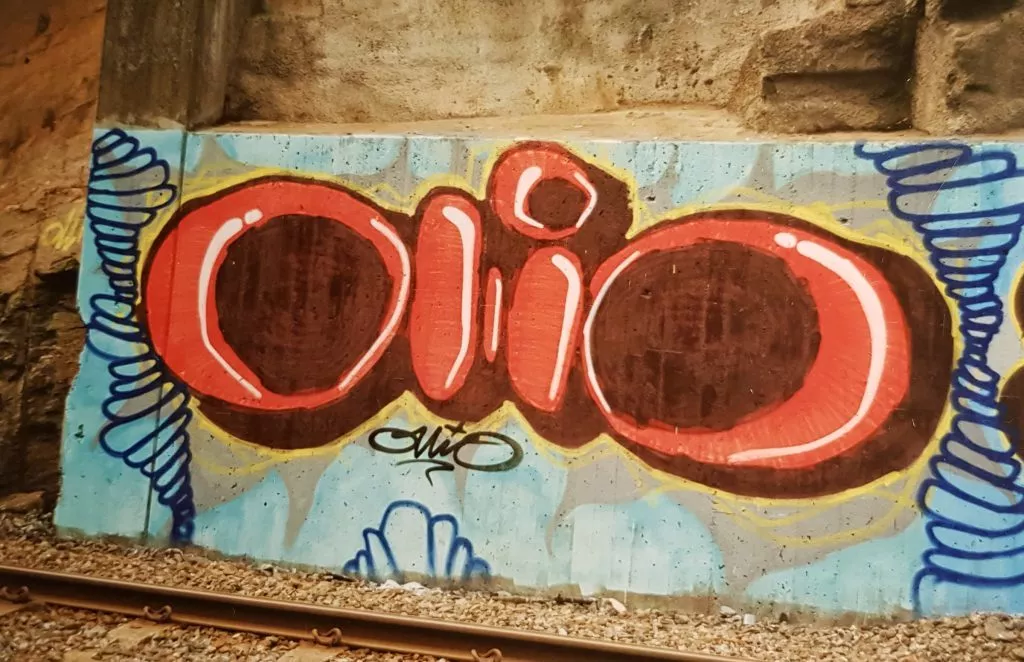

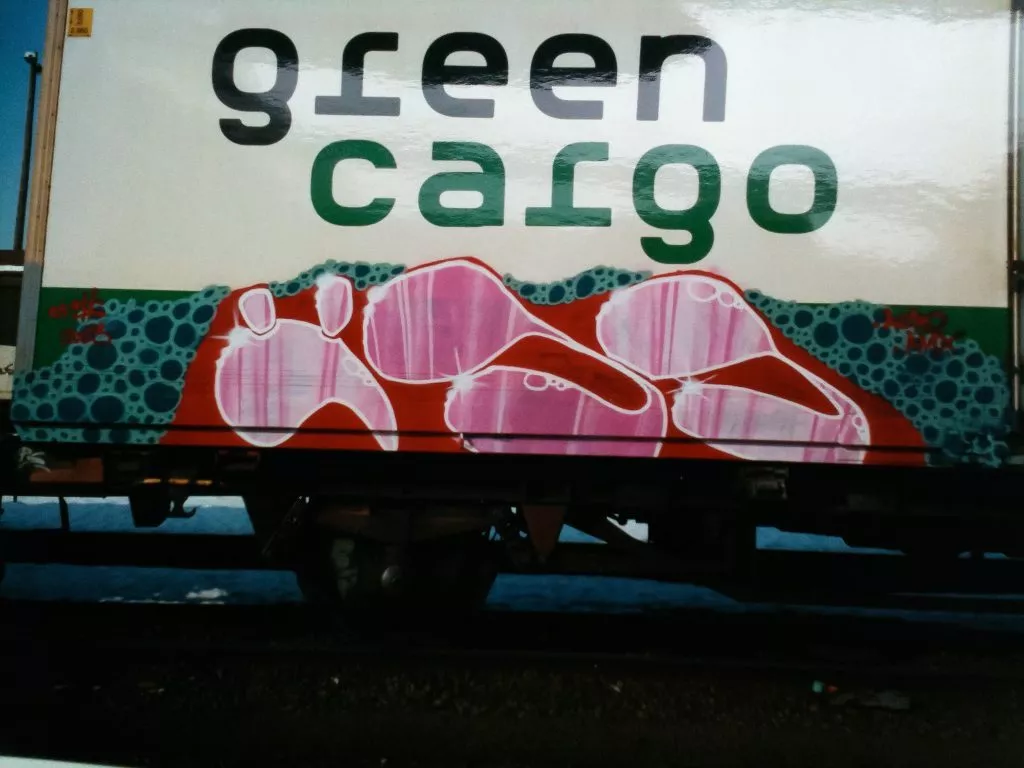
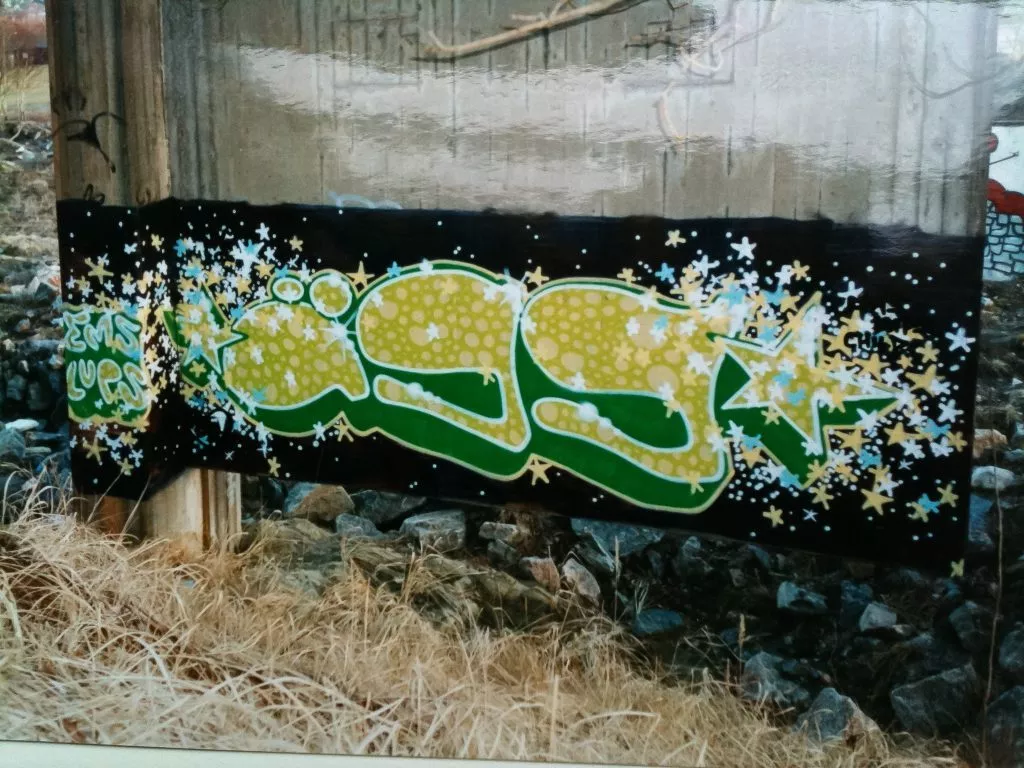
After those first two years of art studies, OLLIO left to Barcelona for a couple of months, where he painted a lot because at that time it was easy there to work in the streets. When he came back home, he started studies at the HDK-Academy of Design and Crafts in Gothenburg, where he did his master in 2007 in textile art. There he learned the silk screen printing technique and the hand-tufted textile technique to create paper works and textile works like rugs. He applied his abstract style he developed on walls over many years finally on paper, creating print editions and for textile he started to produce handmade rugs in different formats and shapes. During those years of studies, he also discovered the French comic artist Moebius and his fantastic comic books, and other science fiction comics, that are still a big inspiration for him. But OLLIO continued to paint outdoor, experimenting even more, doing some original abstract pieces on trains and walls in 2003-2004. A big inspiration at the time was a writer named HOTEL from Stockholm, he remembers today. Mainly painted with rollers and paint, those abstract compositions by OLLIO with colourful fields and stylized shapes are outstanding for that time beginning of the 2000s..



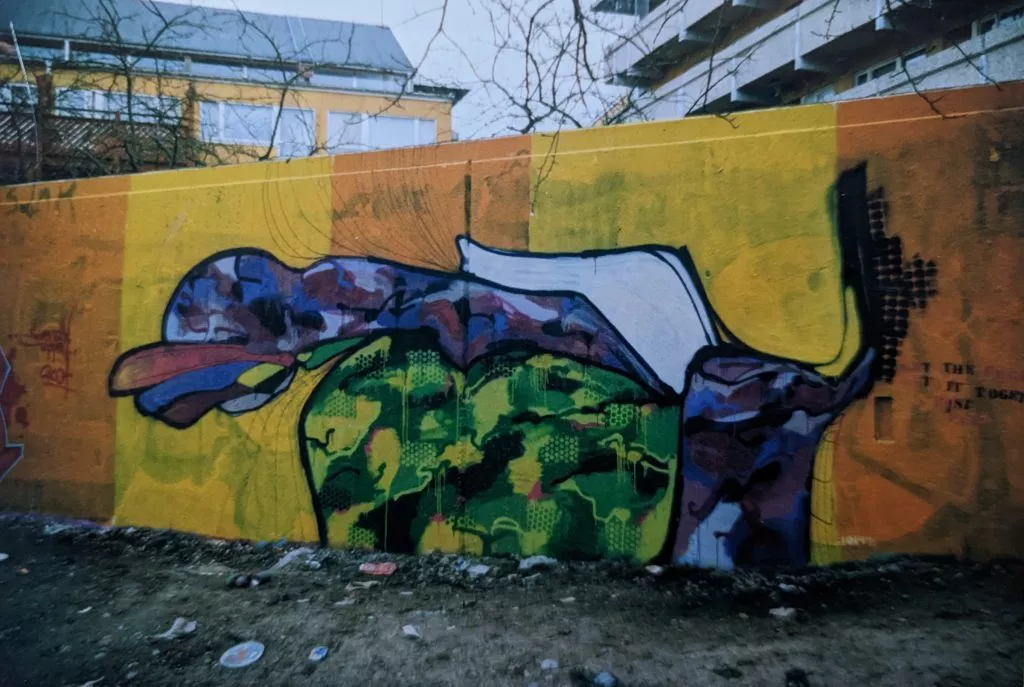
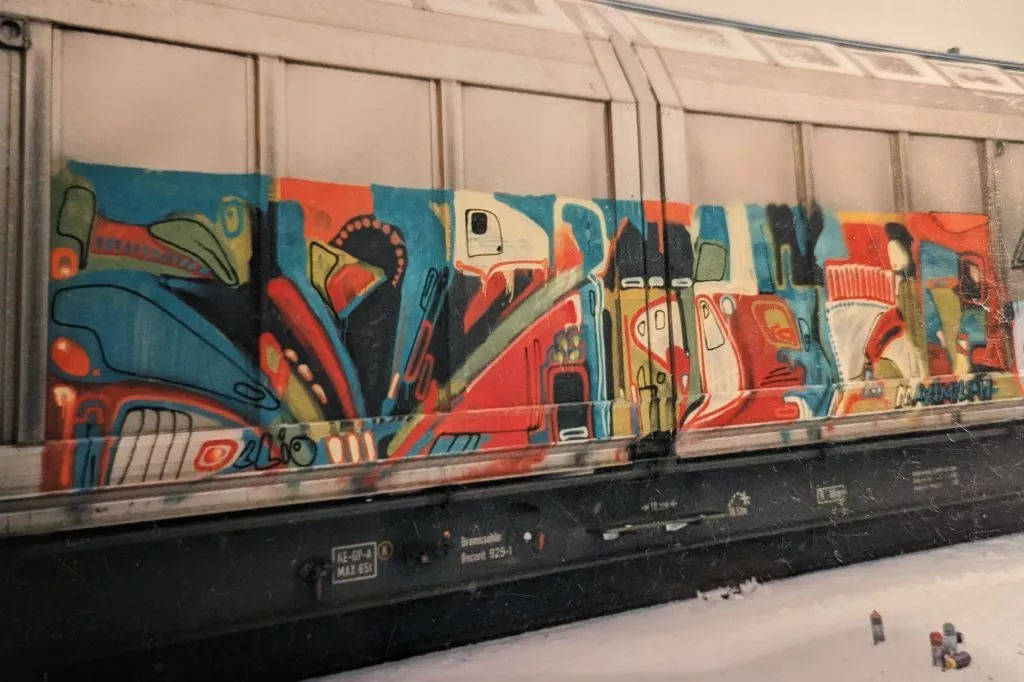
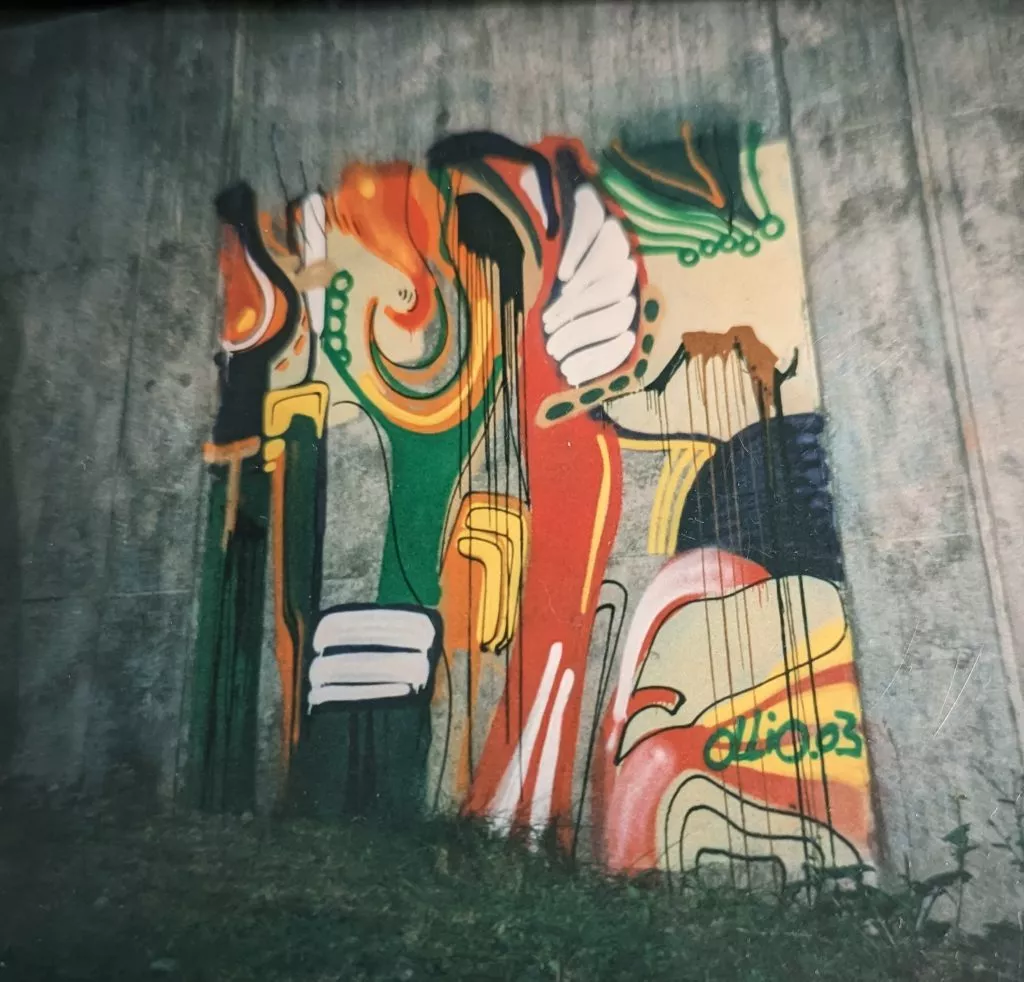
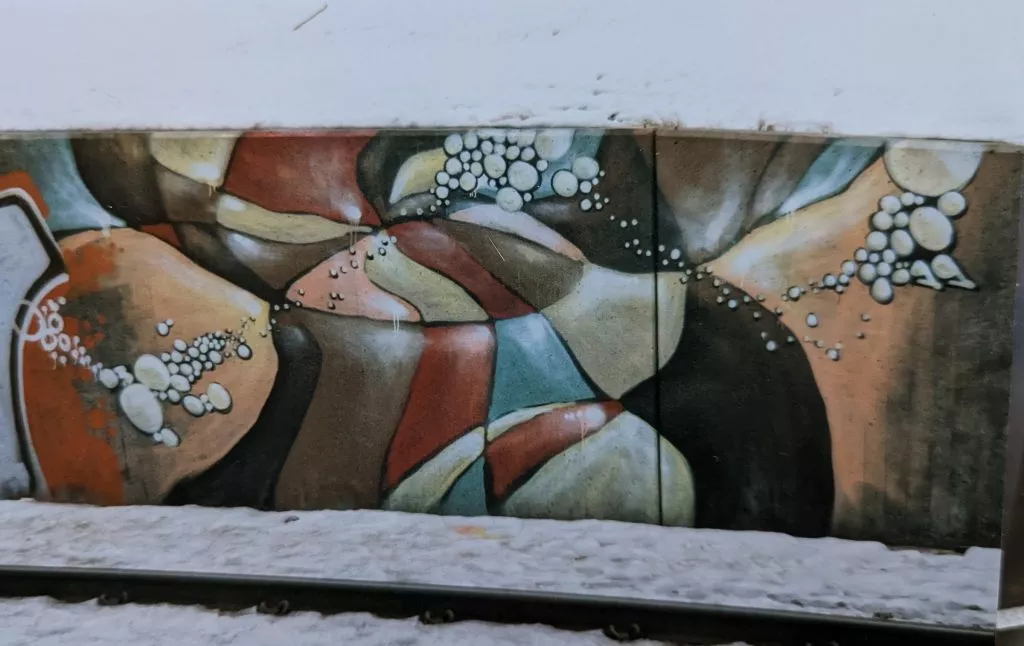
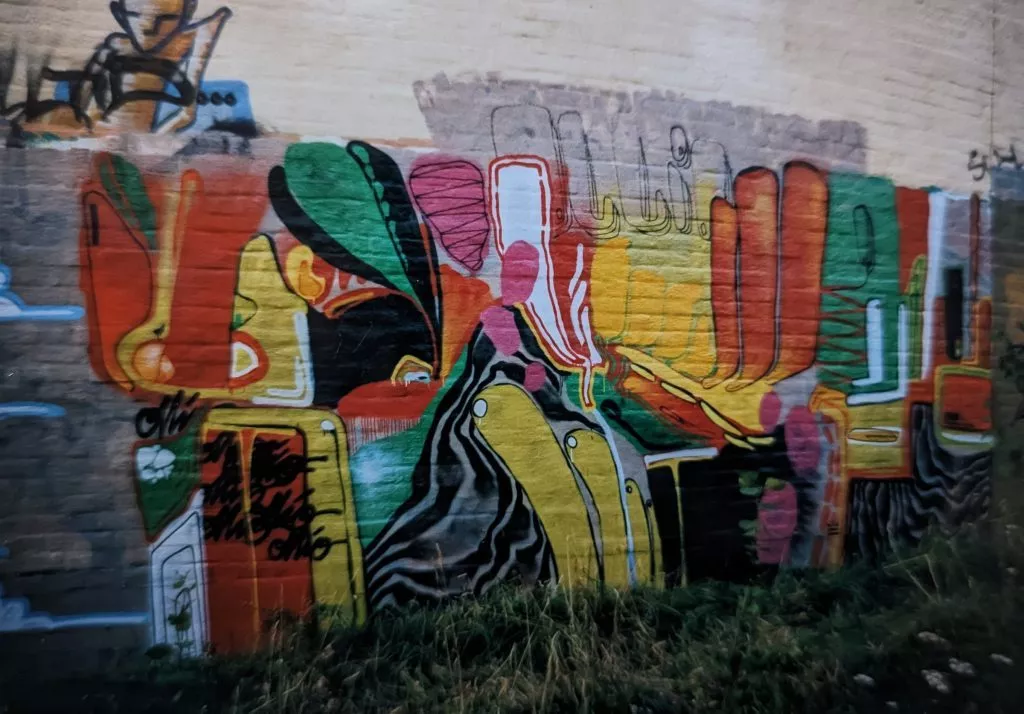
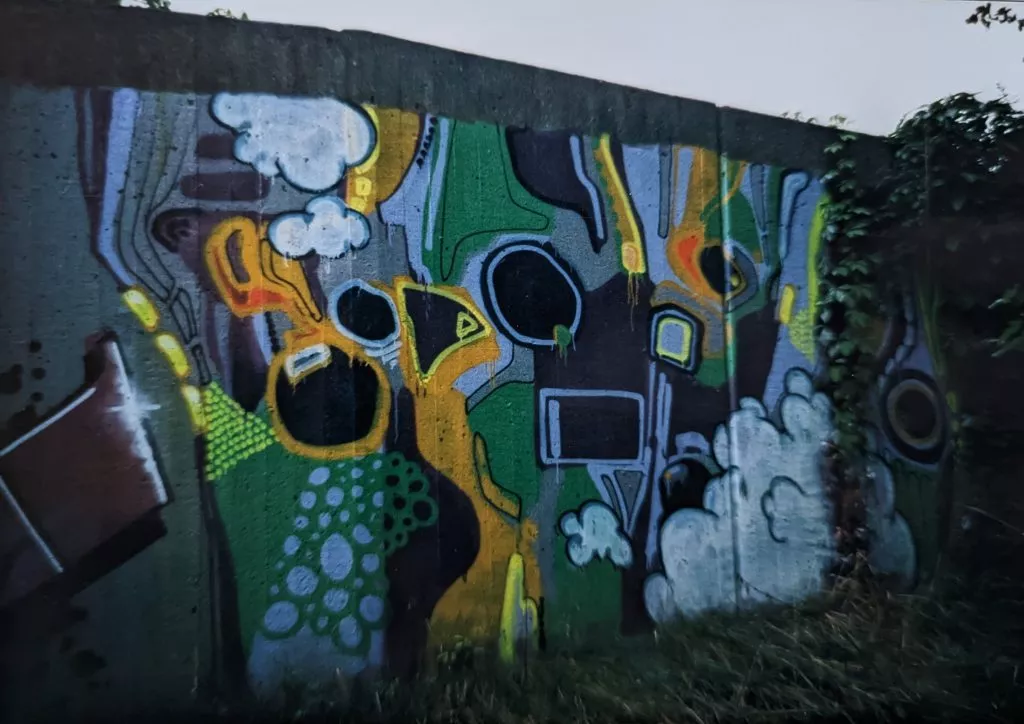
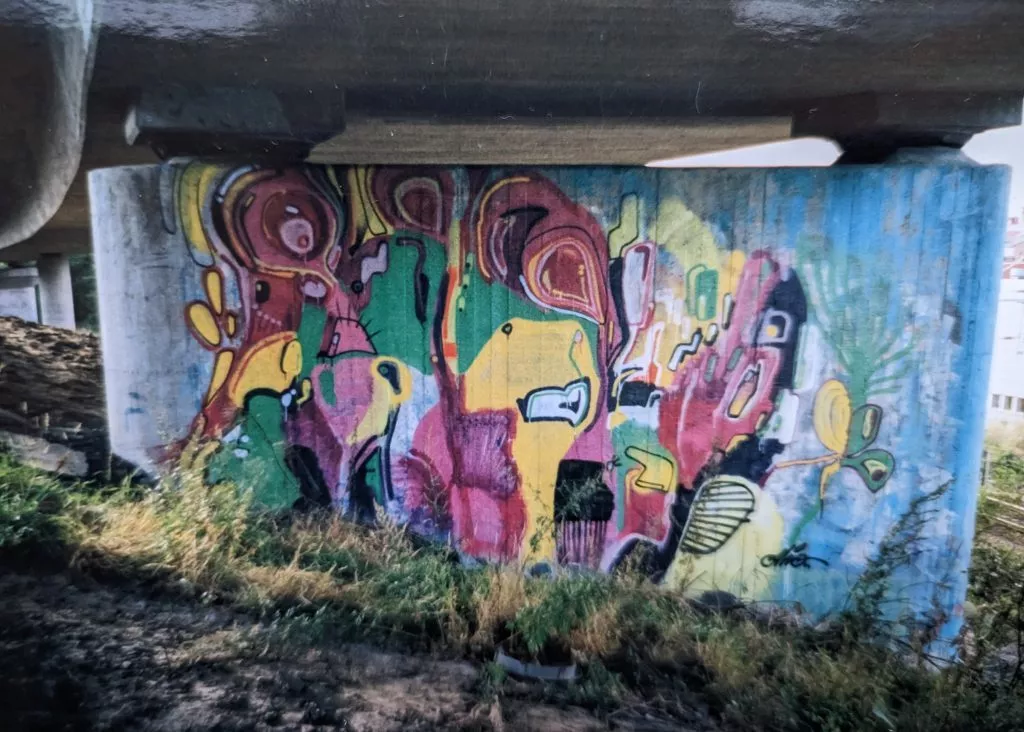
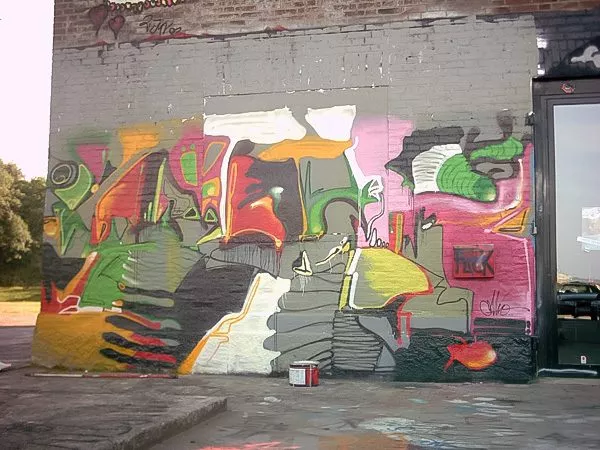
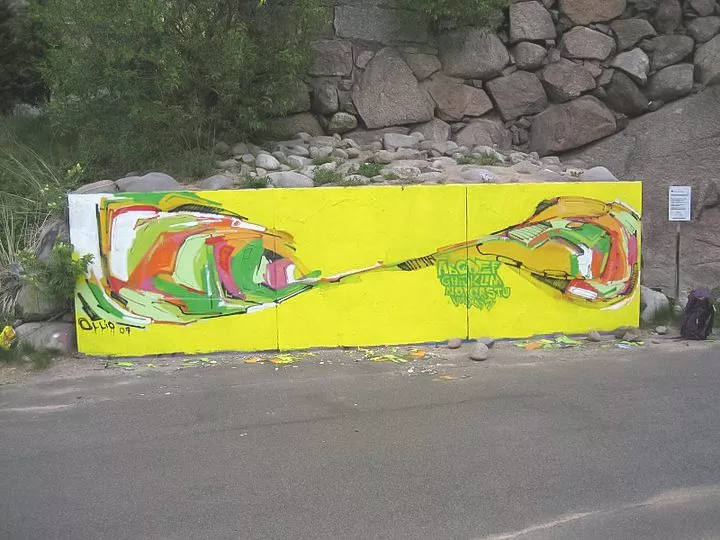
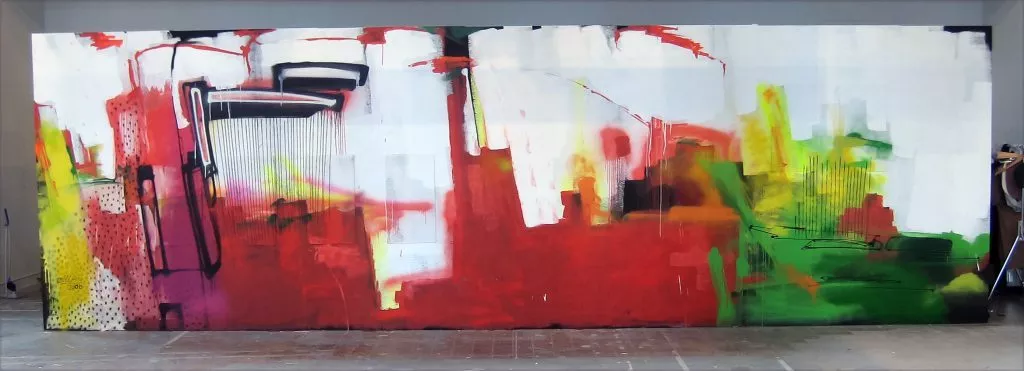
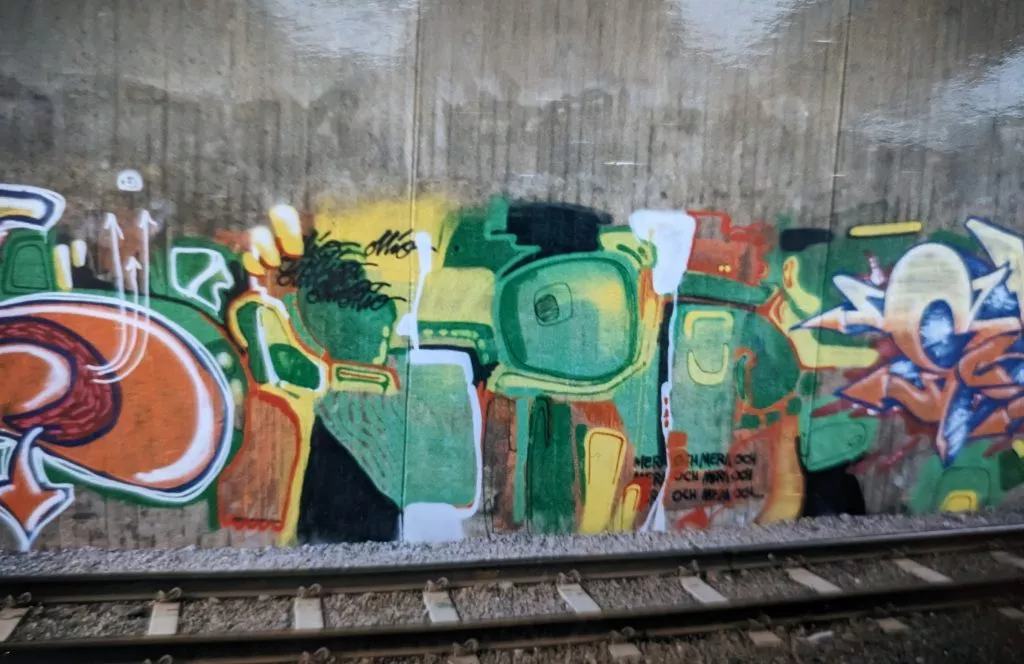
OLLIO’s experimental abstraction
OLLIO’s play with letters and characters from the writing culture evolved after 1999 to abstract patterns and formless shapes, that look like things, but are not identifiable, not figurative or representational elements. They are enlaced and interconnected, evolving like doodles in a free composition with many outlines. Seeming organic-mechanic, made of pieces of wheels, lines, pipes and rectangles, or with more round and organic looking shapes, his wall paintings/pieces seem in motion and like a living entity. OLLIO triggers our view and imagination, because it takes time to decipher all the elements and details in most of his works and to fallow the interconnections and dynamics in the compositions.
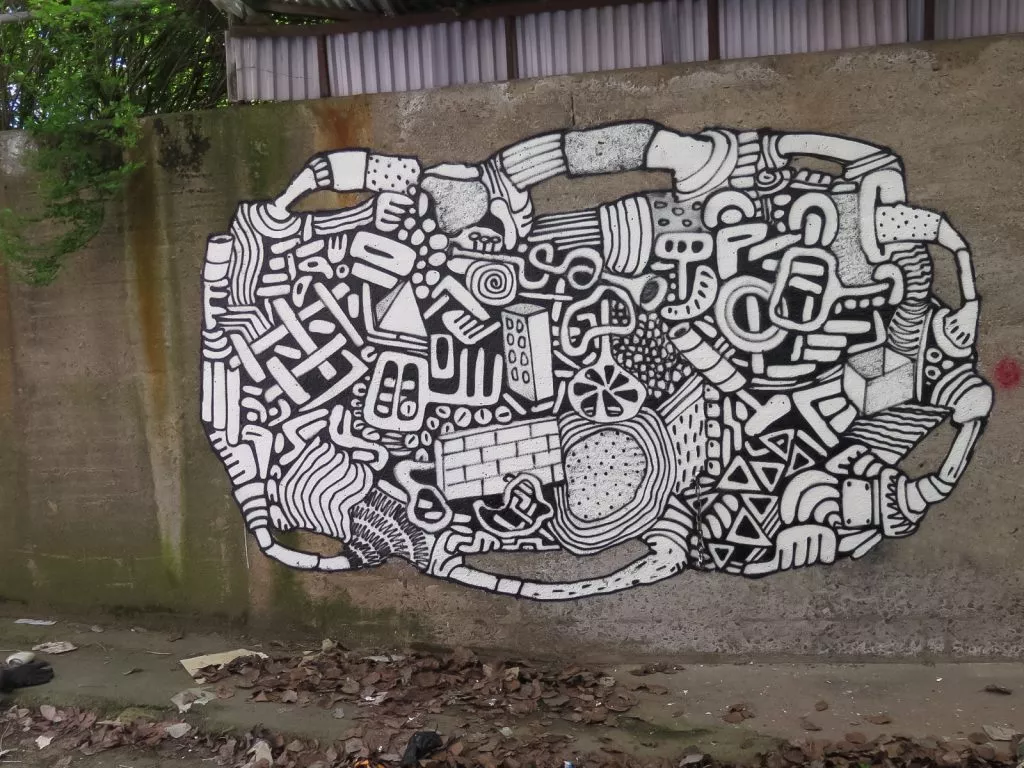
Coming from the freestyle culture, the artist still uses freestyle elements on walls and also on paper, mainly in his sketchbook. He sketches a lot, takes notes, but never copies a sketch on a wall. His sketchbook is a bank of stuff for new ideas, he says. In recent years, he also started to draw with an iPad, adding new possibilities for creating images.
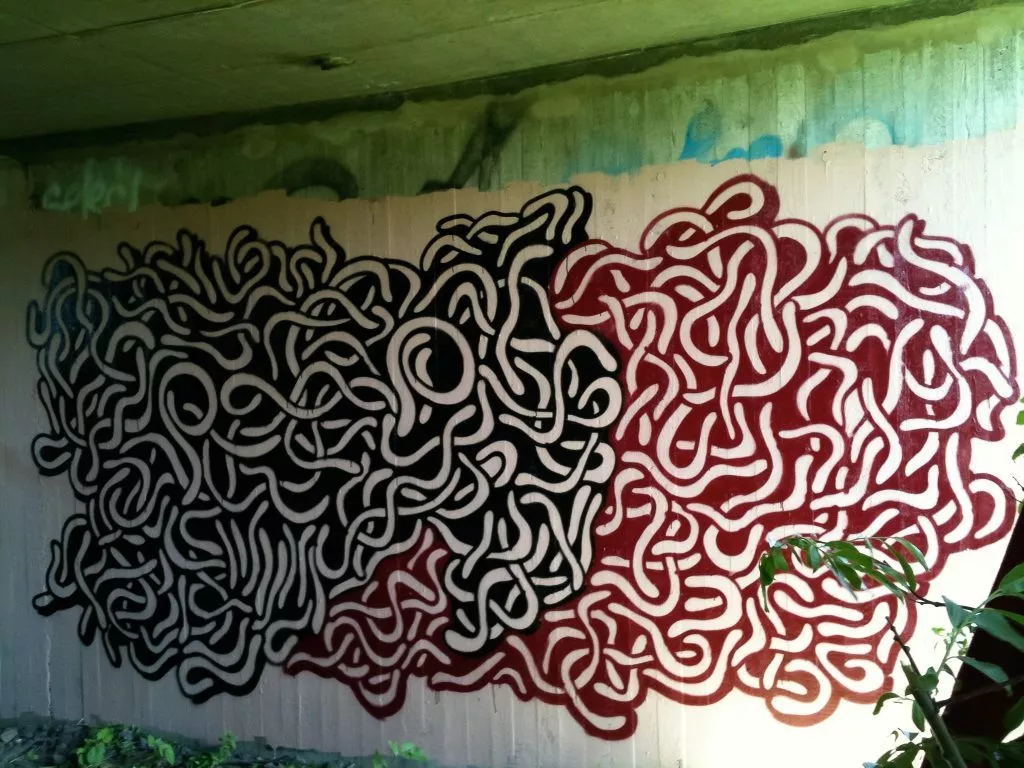




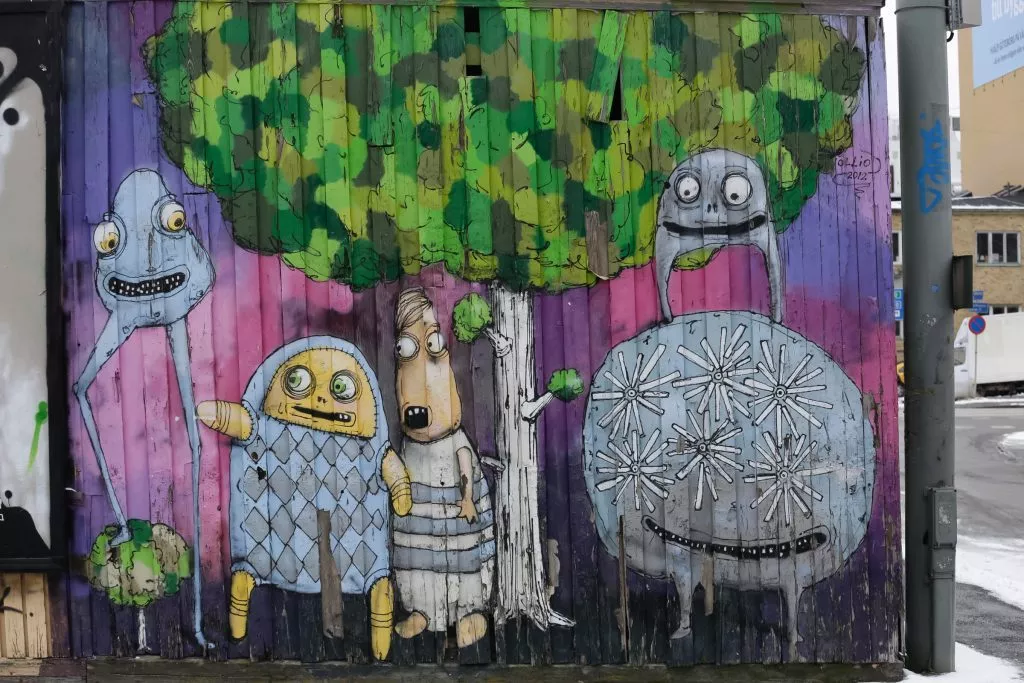
When OLLIO starts a composition on a wall, at first, he sets a size, a scale of the shapes depending on the material he has and depending on the size of the wall. Once he defined the sizes of his patterns, he improvises, tries not to think too much but leaving the forms develop freely like a doodle. The shapes he paints are his common personal shapes he developed over the years, and this with a dynamic and motion, going with the flow during the process and painting fast to keep the flow. Sometimes he delimits a space like a rectangle on the wall to fill out with his forms, patterns, like a panoramic canvas. But most of the time his compositions are set in a cloudy round organic shape on the wall that he still calls a piece. Concerning his technique on wall, OLLIO uses roller and wall paint as well as spray paint. For the choice of the colours, he likes to use light colours in the background, like pastel colours in yellow, pink or violet tones painted with wall paint and adds black lines with the spray can to obtain a high contrast. Some of his works are black and white as well to obtain the maximum of contrast.
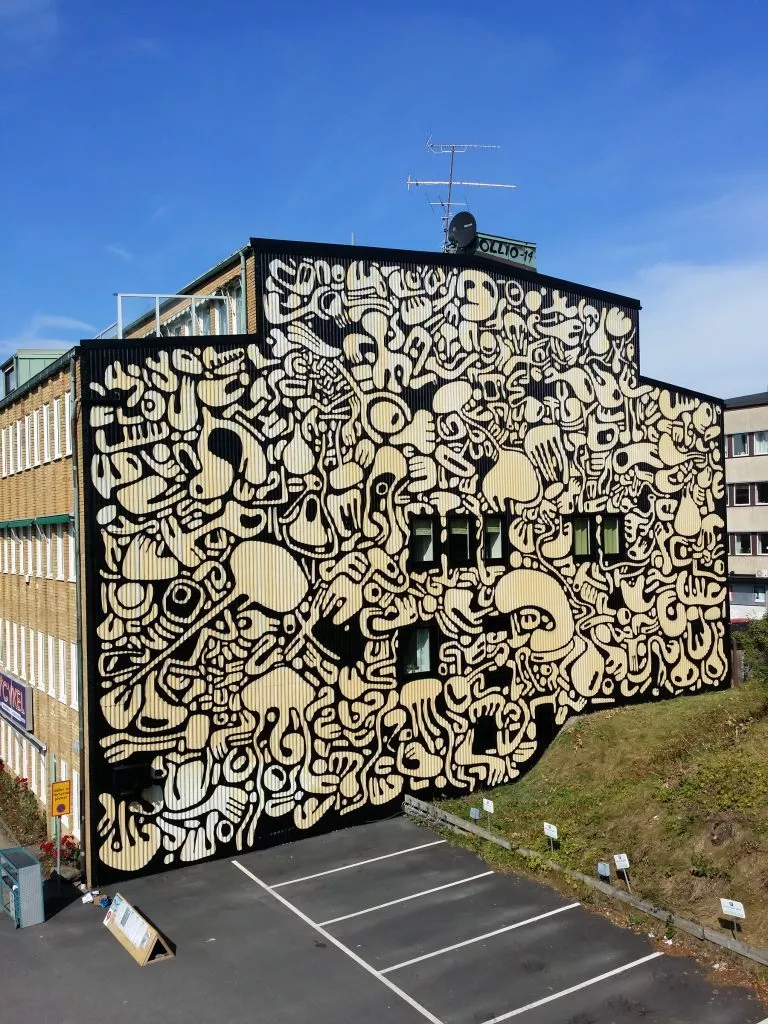


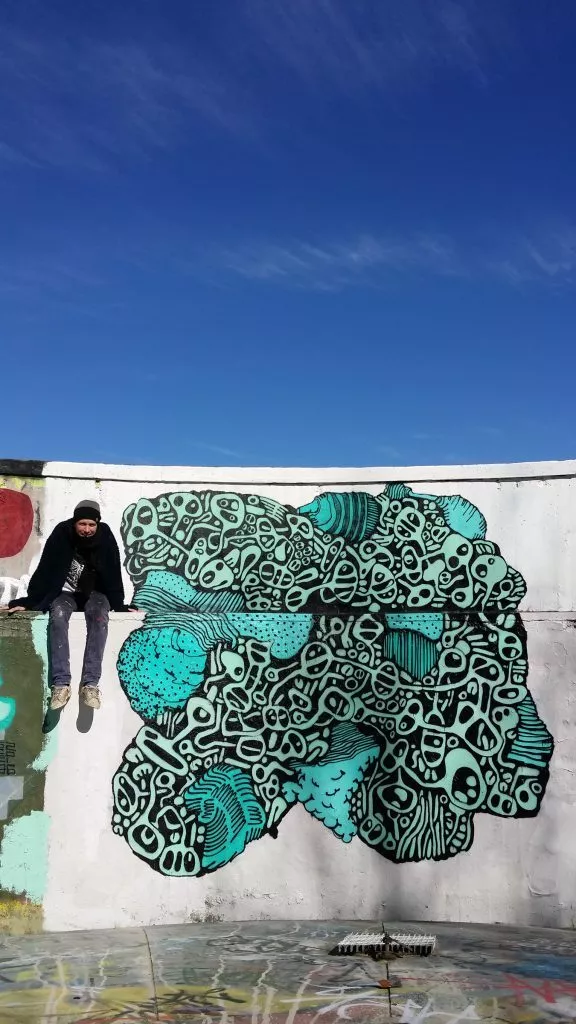
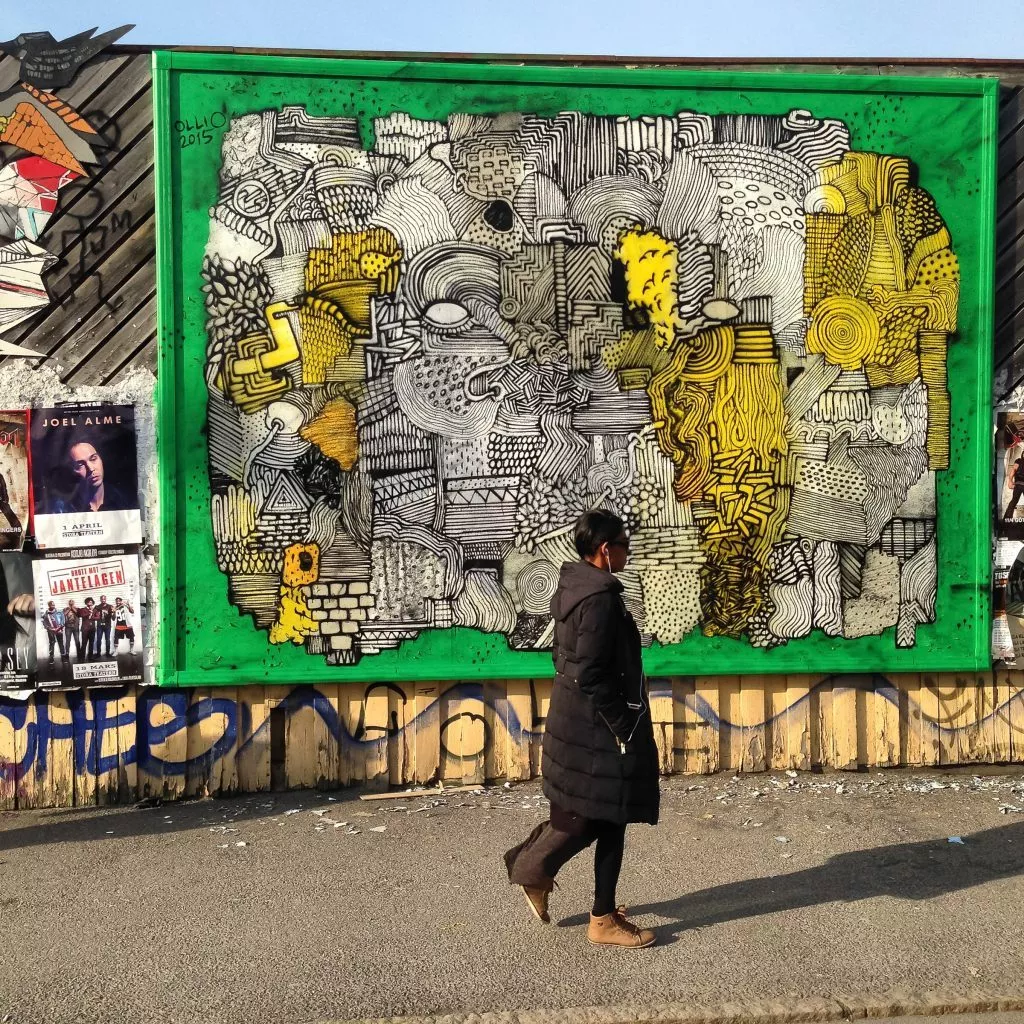



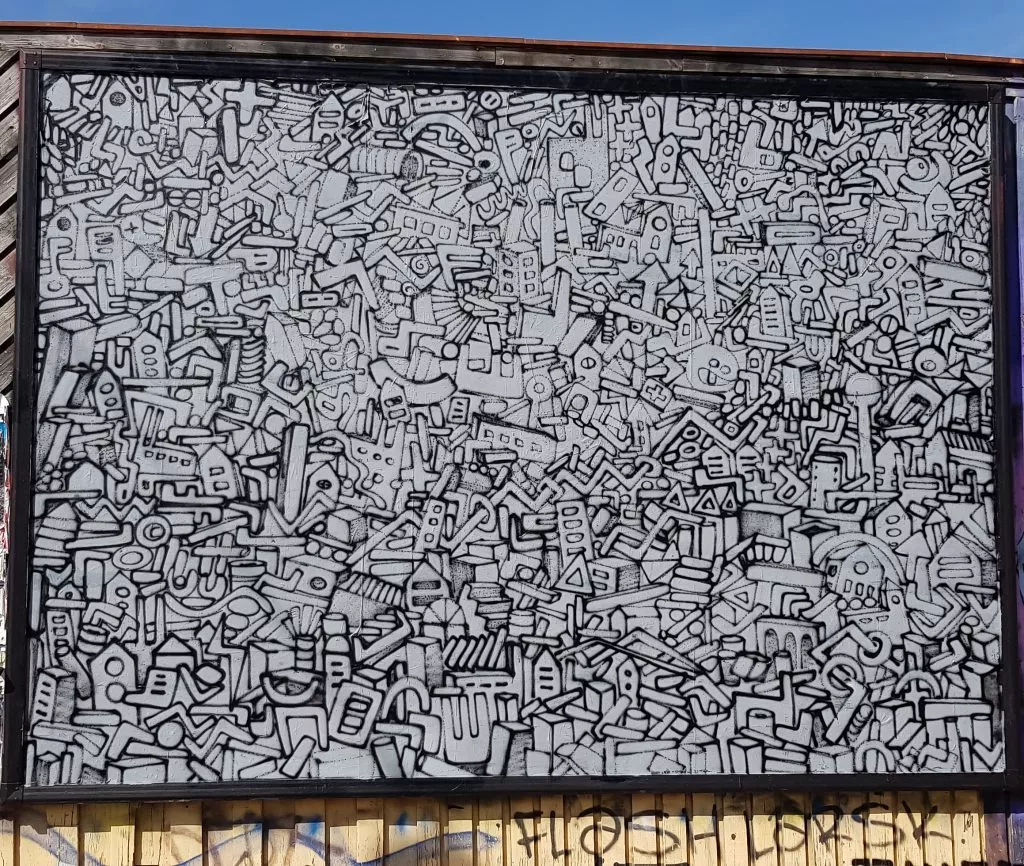
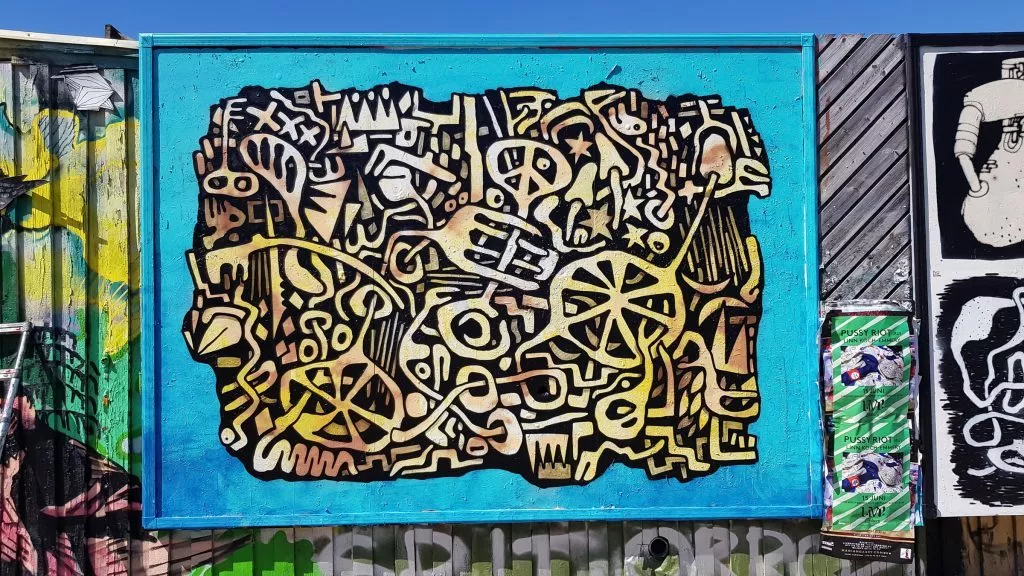
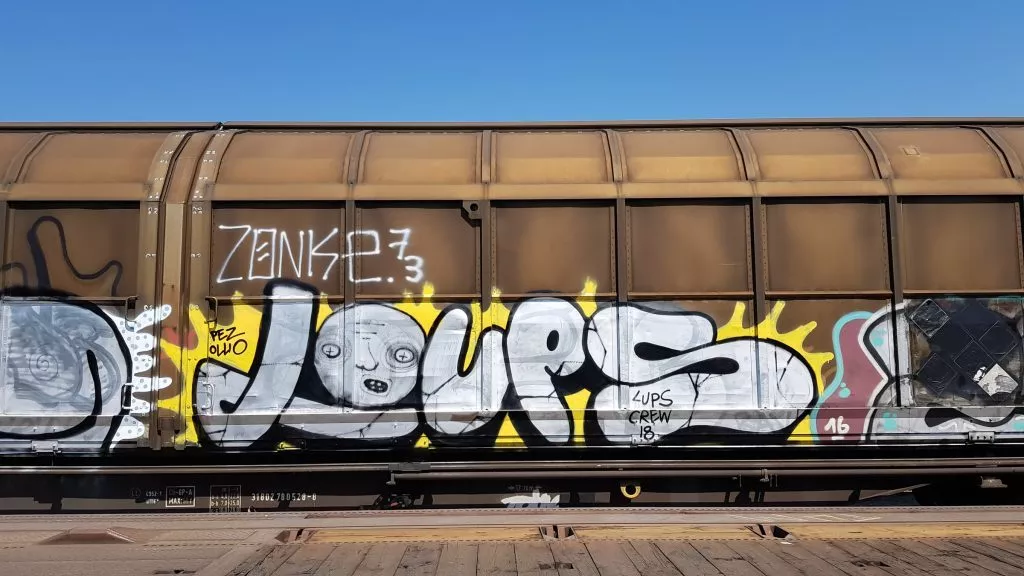
OLLIO likes to try out new combinations, to be in a constant evolution, even if he considers it himself as slow and with only light changes, he is guided by his intuition to not stagnate. And even if he doesn’t paint letters any more in his art work, because according to him, he always had a complicated relation to letters as forms anyway, he still loves tags, lettering and classical pieces and still goes out bombing sometimes with other names besides his abstract works or commissioned walls as OLLIO.
Since many years, he showed his studio works, mainly works on paper and textile art, in many exhibition mainly throughout Sweden. His rugs got a special attention: as original abstract rugs they are indeed outstanding, using a uncommon medium in the post graffiti scene. And as unique artworks for the wall in different shapes, sizes and colours, made by the artist himself with the tufting technique, they contain his visual language developed over years with style writing and abstraction as well are are also images.


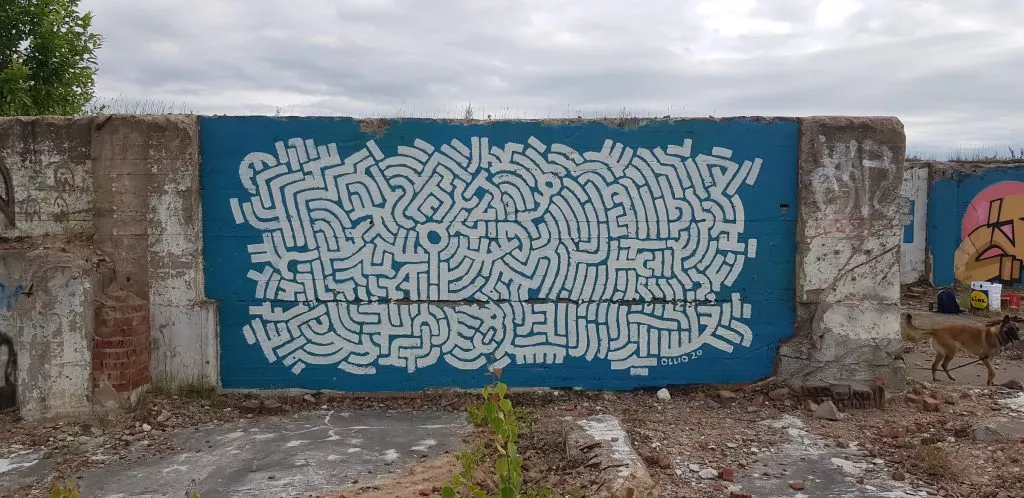

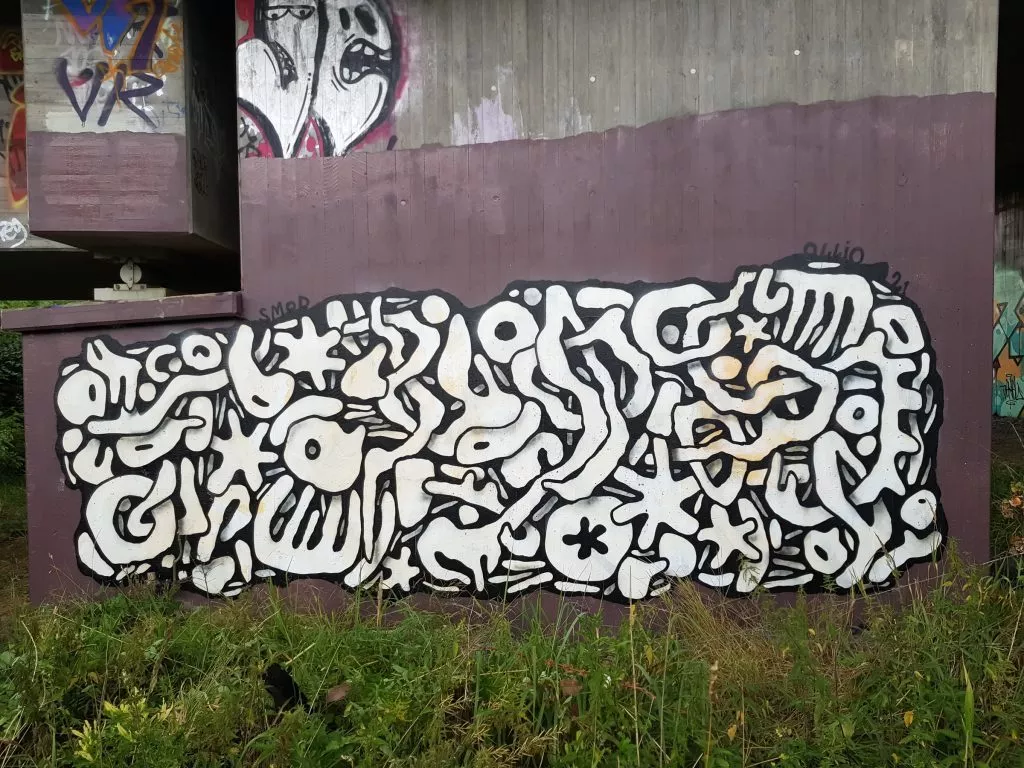
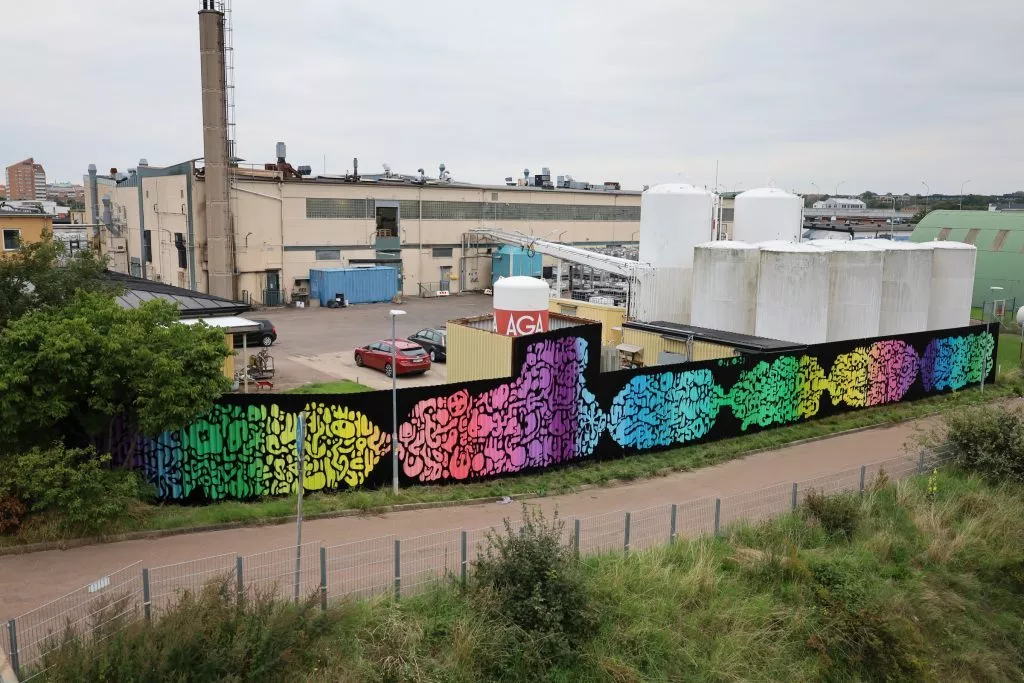
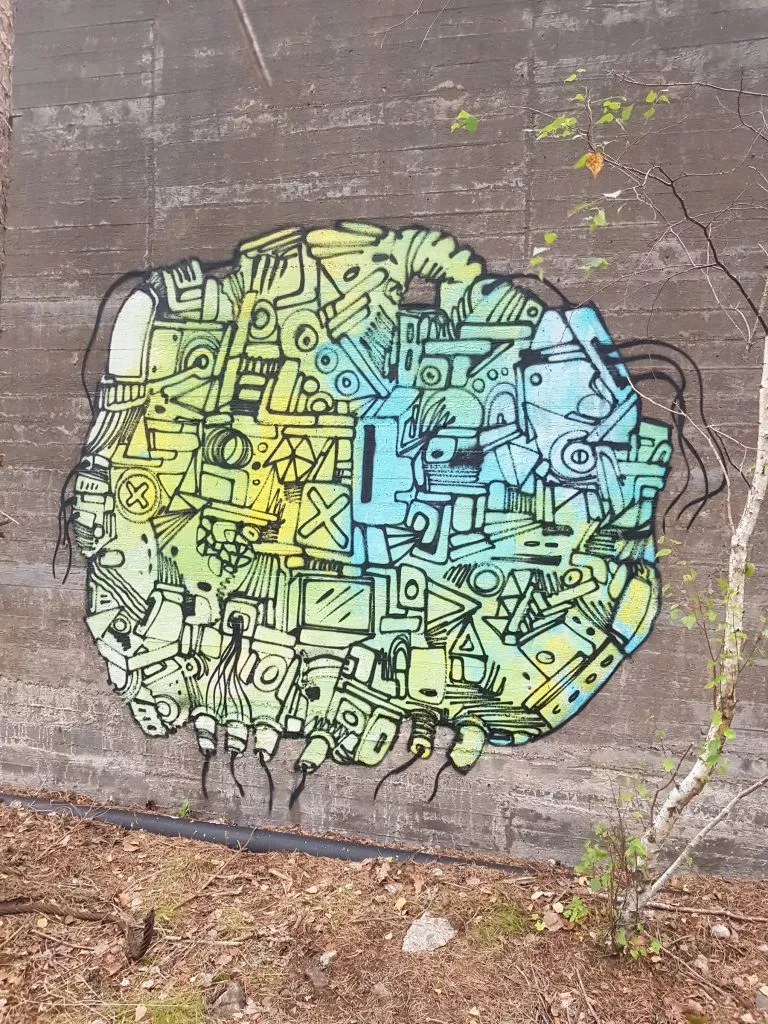

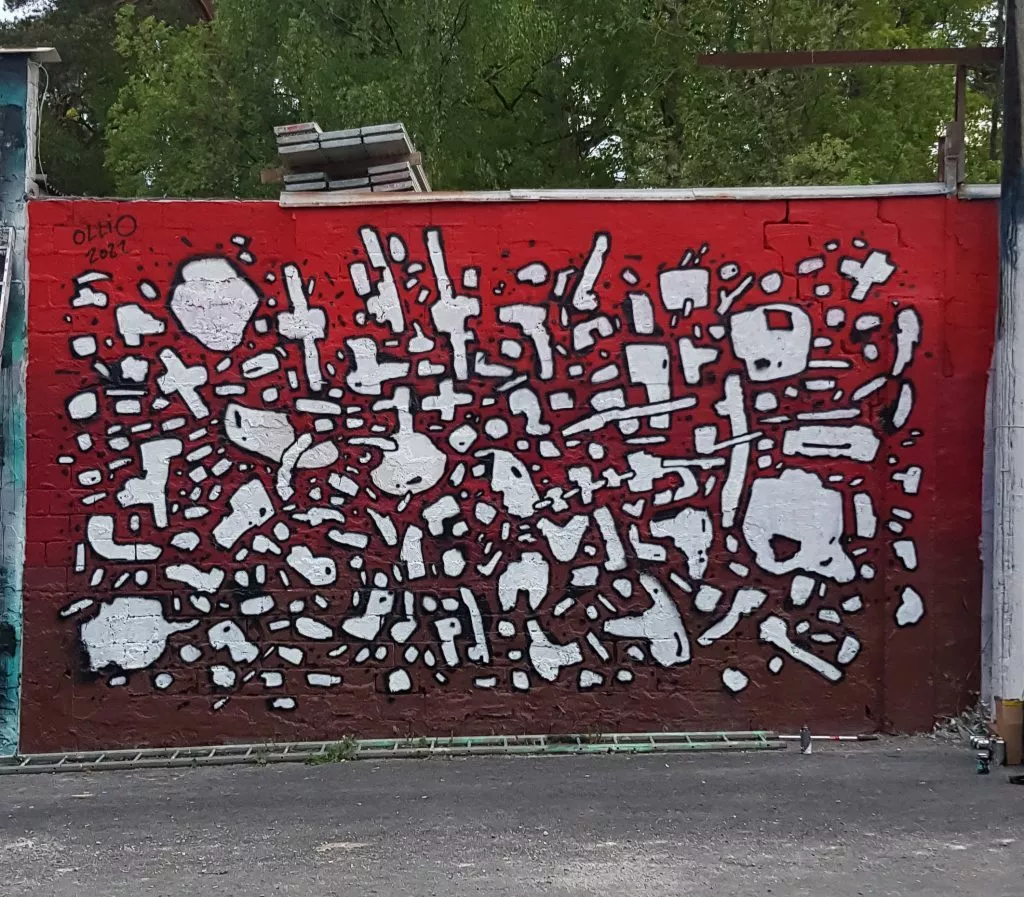

In the last 20 years, OLLIO painted over 1000 murals in various contexts, and obtained 45 public commissions from different municipalities already. With his early abstract works and his very personal style, that he calls himself experimental abstraction, he is one of the major figures in abstract post-graffiti in Sweden.
OLLIO is also the editor of AGM Magazine (Abstract Graffiti Magazine). He had the idea of a magazine only dedicated to abstract graffiti long time ago because he discovered so many good works on Instagram. During the Corona pandemic, he had suddenly a lot of time and did the first number in 2021, without a particular plan. He had already some experience in doing books and working with InDesign for graphic design since a while. The first issue was published with 150 copies. Because of the good response from people, he decided to continue. He made many contacts through Europe and more and more writers and artists from all over the world are sending him photos to get published, after making his open calls for the next issue. The magazine and its readers has been growing since its beginning and upcoming issue 6 will be printed with 600 copies, coming out soon in April 2023.
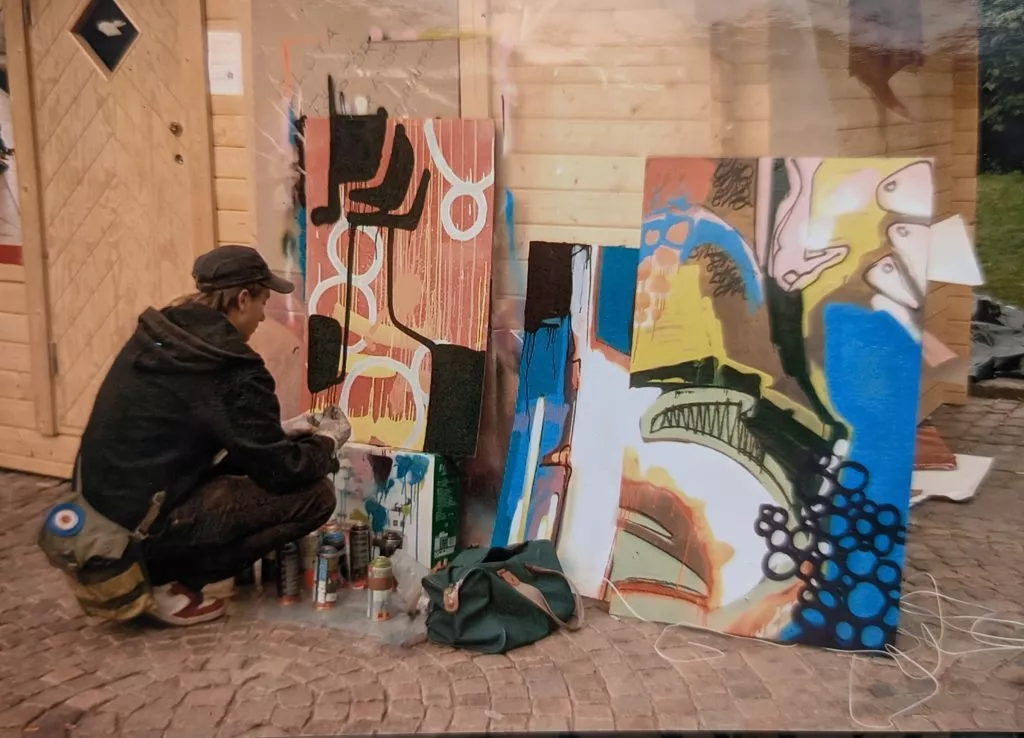
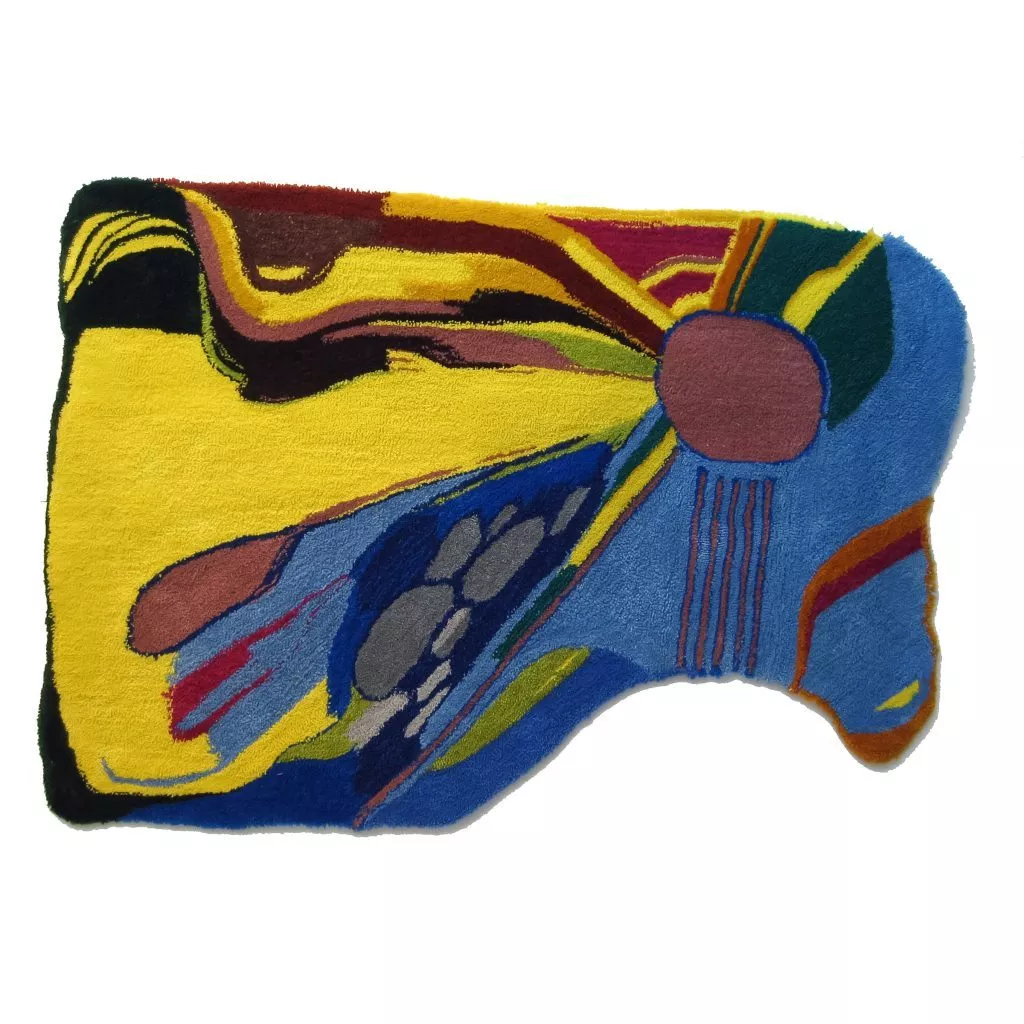
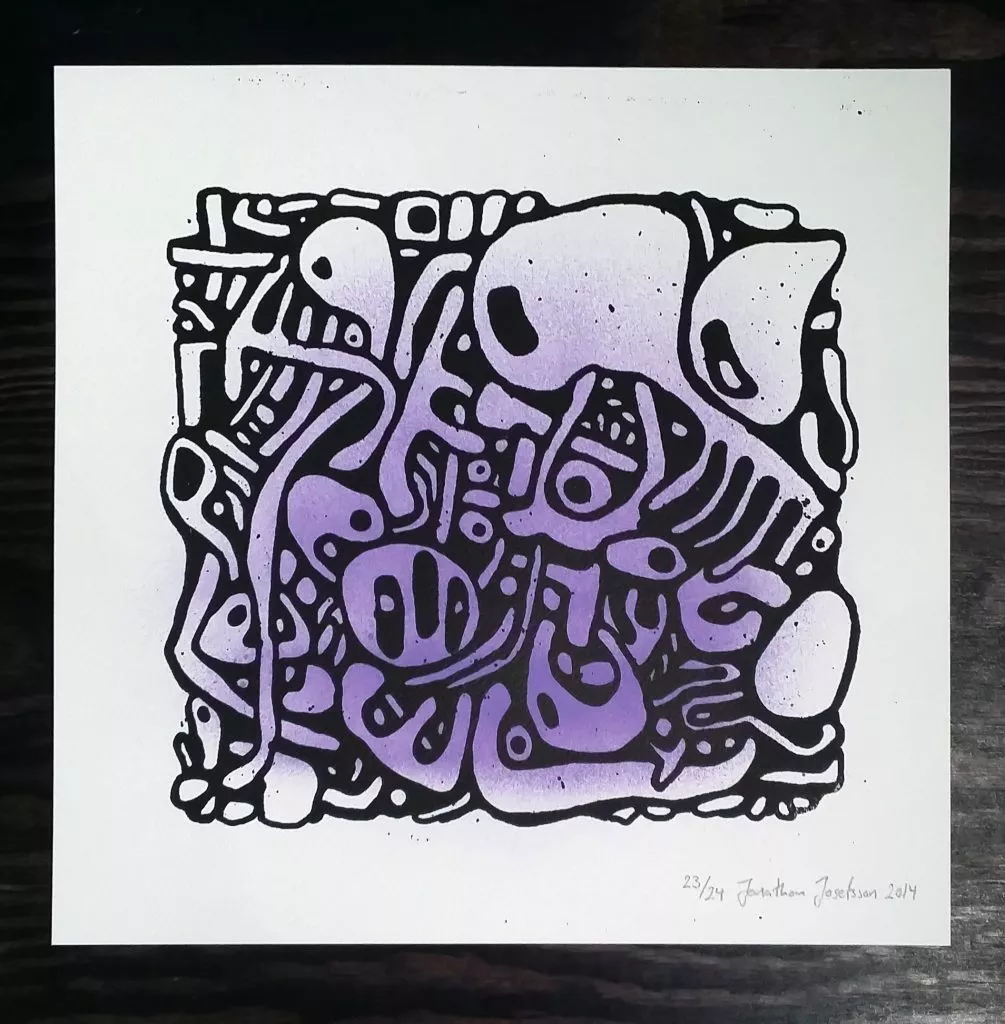
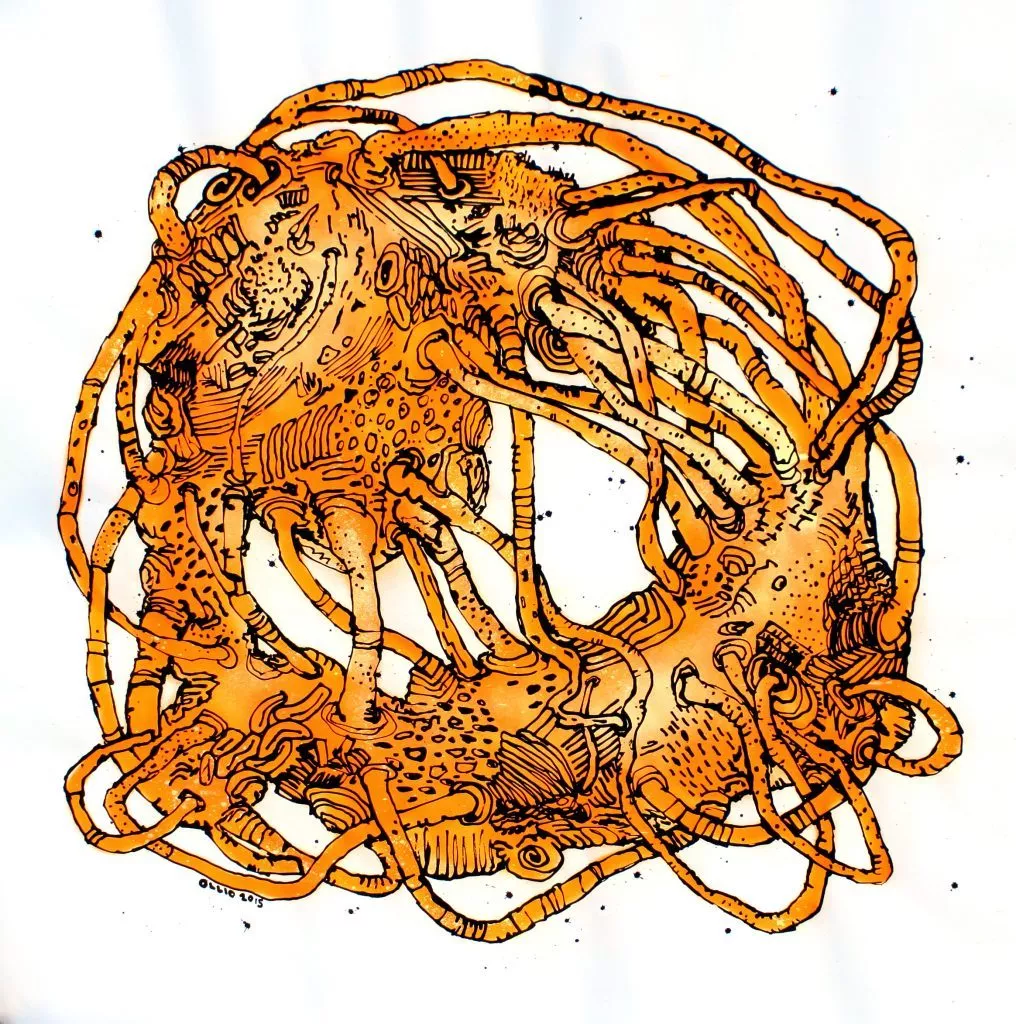

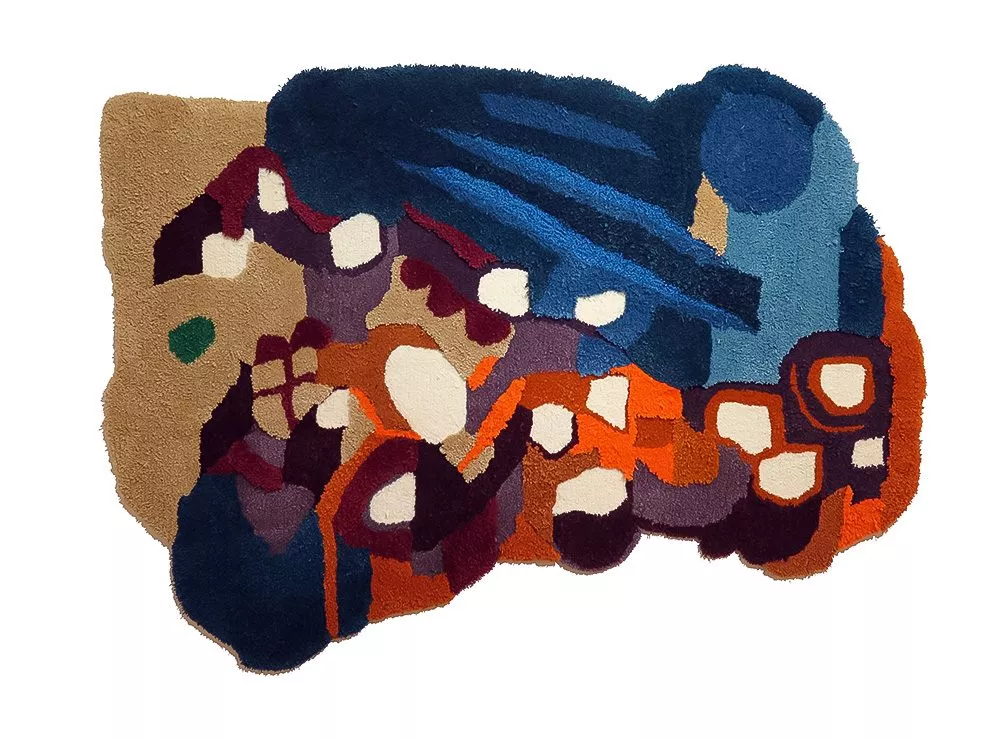
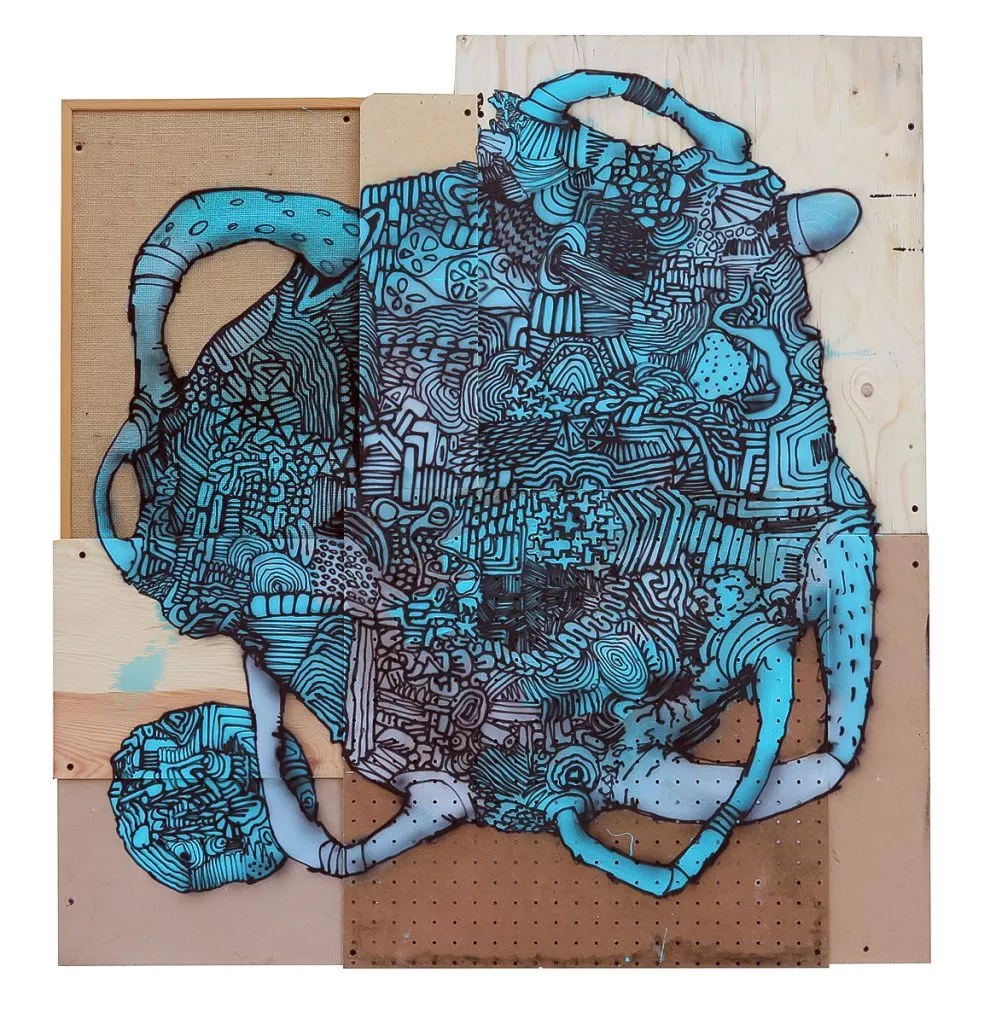
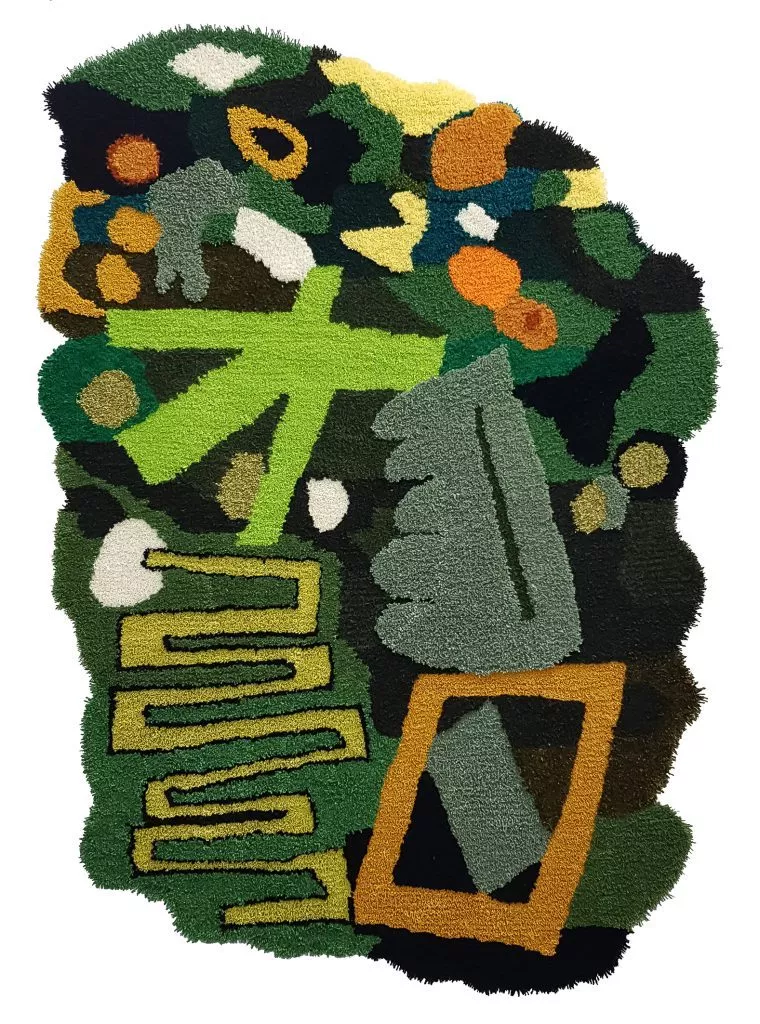

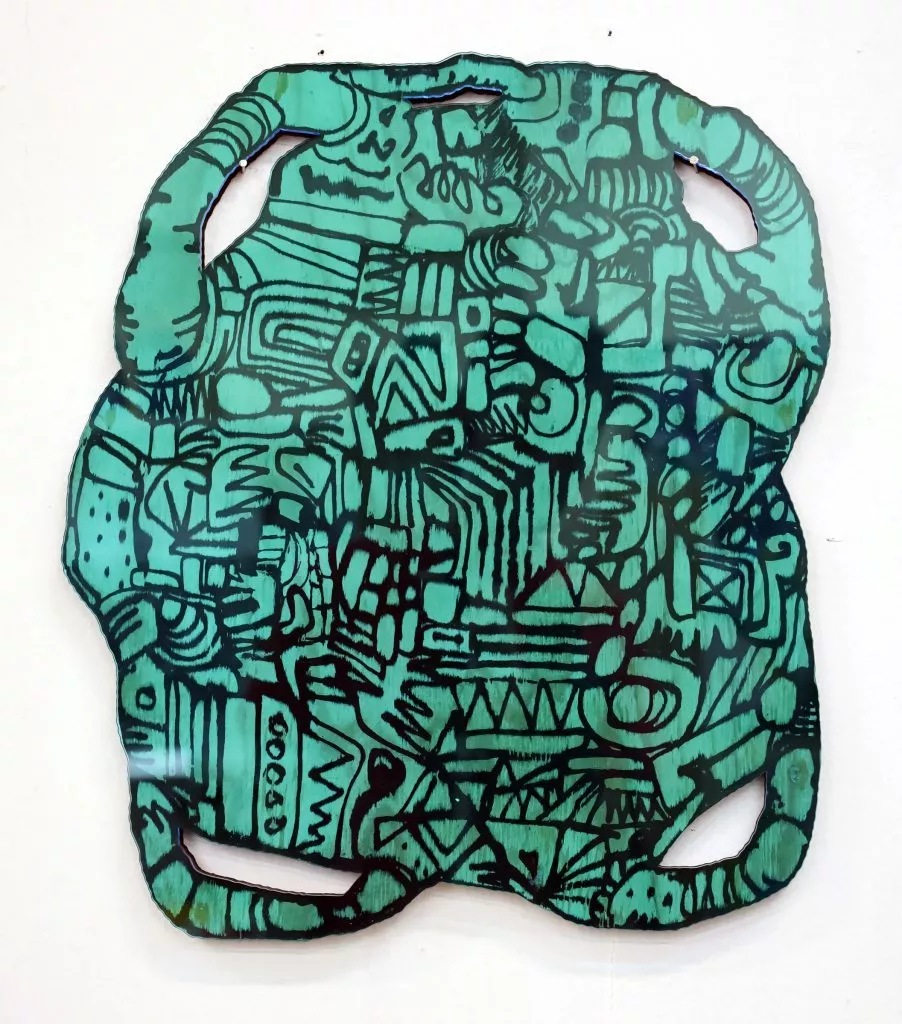

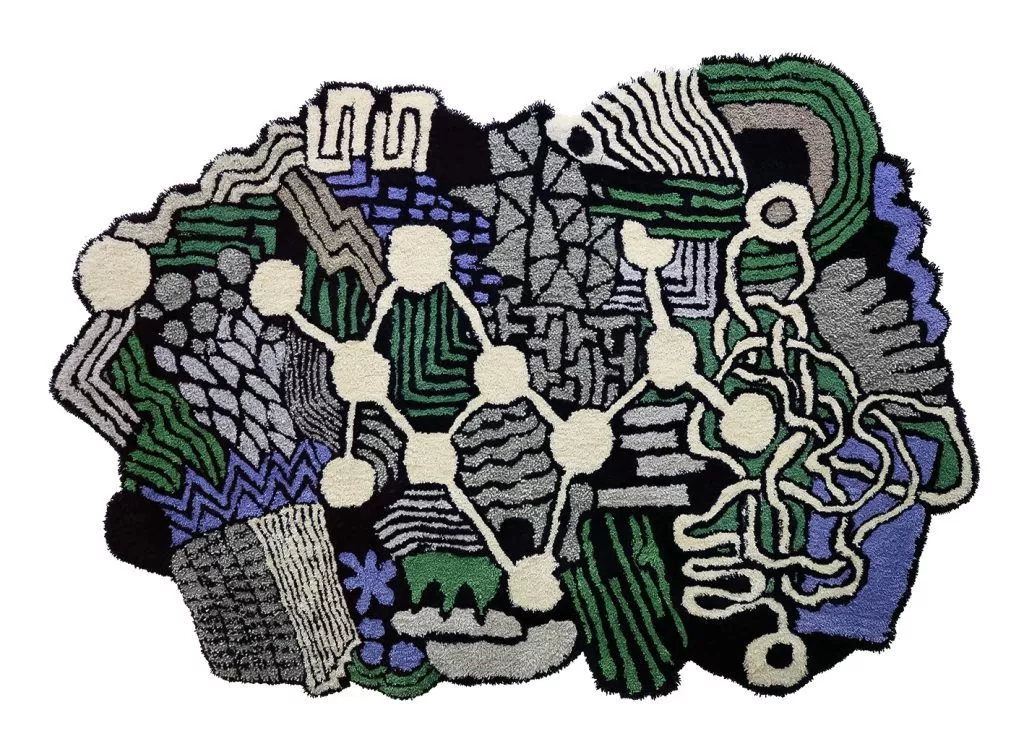
391 views
Categories
Tags:






Leave a Reply